

The Author’s Purpose for students and teachers
What Is The Author’s Purpose?
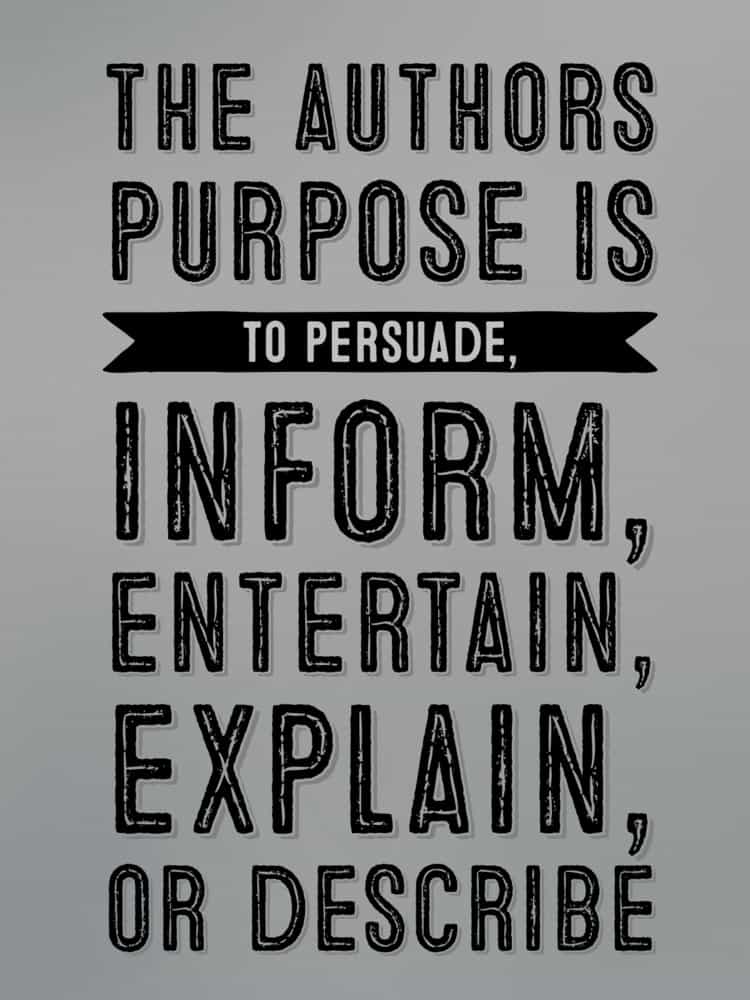
When discussing the author’s purpose, we refer to the ‘why’ behind their writing. What motivated the author to produce their work? What is their intent, and what do they hope to achieve?
The author’s purpose is the reason they decided to write about something in the first place.
There are many reasons a writer puts pen to paper, and students must possess the necessary tools to identify these reasons and intents to react and respond appropriately.
Understanding why authors write is essential for students to navigate the complex landscape of texts effectively. The concept of author’s purpose encompasses the motivations behind a writer’s choice of words, style, and structure. By teaching students to discern these purposes, educators empower them to engage critically with various forms of literature and non-fiction.
Author’s Purpose Definition
The author’s purpose is his or her motivation for writing a text and their intent to Persuade, Inform, Entertain, Explain or Describe something to an audience.
Author’s Purpose Examples and Types
It is universally accepted there are three base categories of the Author’s Purpose: To Persuade, To Inform , and To Entertain . These can easily be remembered with the PIE acronym and should be the starting point on this topic. However, you may also encounter other subcategories depending on who you ask.
This table provides many author’s purpose examples, and we will cover the first five in detail in this article.
| Author’s Purpose | Author’s Purpose Examples |
|---|---|
| : | The author aims to convince the reader to agree with a particular viewpoint or take a specific action. This can be seen in opinion pieces, advertisements, or political speeches. |
| : | The author aims to provide factual information to the reader, such as in textbooks, news articles, or research papers. |
| : | The author aims to engage and amuse the reader through storytelling, humour, or other means. This includes genres such as fiction, poetry, and humour. |
| : | The author’s purpose is to provide step-by-step guidance or directions to the reader. Examples include manuals, how-to guides, and recipes. |
| : | The author uses vivid language to paint a picture in the reader’s mind. This can be found in travel writing, descriptive essays, or literature. |
| : | Some authors write primarily to express themselves, their thoughts, emotions, or experiences. This can be seen in personal essays, journals, or poetry. |
| : | Exploratory writing involves delving into a topic or idea to gain a deeper understanding or to provoke thought. This can be found in philosophical essays, literary analysis, or investigative journalism. |
| : | Authors may write to document events, experiences, or historical periods for posterity. This includes memoirs, autobiographies, and historical accounts. |
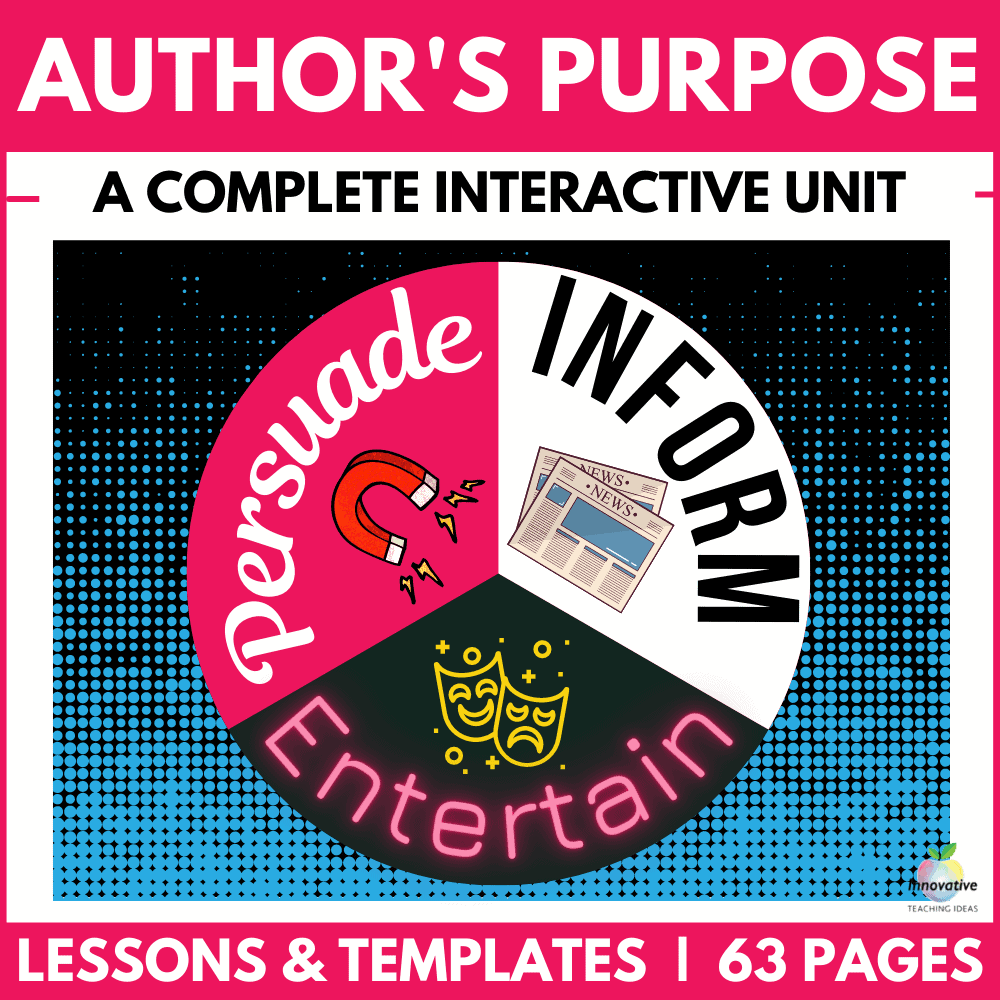
Author’s Purpose Teaching Unit
Teach your students ALL ASPECTS of the Author’s Purpose with this fully EDITABLE 63-page Teaching Unit.
⭐⭐⭐⭐⭐ ( 42 reviews )

Author’s Purpose 1: To Persuade

Definition: This is a prevalent purpose of writing, particularly in nonfiction. When a text is written to persuade, it aims to convince the reader of the merits of a particular point of view . In this type of writing, the author attempts to persuade the reader to agree with this point of view and/or subsequently take a particular course of action.
Examples: This purpose can be found in all kinds of writing. It can even be in fiction writing when the author has an agenda, consciously or unconsciously. However, it is most commonly the motivation behind essays, advertisements, and political writing, such as speech and propaganda.
Persuasion is commonly also found in…
- A political speech urges voters to support a particular candidate by presenting arguments for their suitability for the position, policies, and record of achievements.
- An advertisement for a new product that emphasizes its unique features and benefits over competing products, attempting to convince consumers to choose it over alternatives.
- A letter to the editor of a newspaper expressing a strong opinion on a controversial issue and attempting to persuade others to adopt a similar position by presenting compelling evidence and arguments.
How to Identify: To identify when the author’s purpose is to persuade, students should ask themselves if they feel the writer is trying to get them to believe something or take a specific action. They should learn to identify the various tactics and strategies used in persuasive writing, such as repetition, multiple types of supporting evidence, hyperbole, attacking opposing viewpoints, forceful phrases, emotive imagery, and photographs.
We have a complete persuasive writing guide if you want to learn more.
Strategies for being a more PERSUASIVE writer
To become a persuasive writer, students can employ several strategies to convey their arguments and influence their readers effectively. Here are five strategies for persuasive writing:
- Understand Your Audience: Know your target audience and tailor your persuasive arguments to appeal to their interests, values, and beliefs. Consider their potential objections and address them in your writing. Understanding your audience helps you create a more compelling and persuasive piece.
- Use Strong Evidence and Examples: Support your claims with credible evidence, statistics, and real-life examples. Persuasive writing relies on logic and facts to support your arguments. Conduct research to find reliable sources that strengthen your case and make your writing more convincing.
- Craft a Persuasive Structure: Organize your writing clearly and persuasively. Start with a compelling introduction that grabs the reader’s attention and states your main argument. Use body paragraphs to present evidence and supporting points logically. Finish with a strong conclusion that reinforces your main message and calls the reader to take action or adopt your viewpoint.
- Appeal to Emotions: Persuasive writing is not just about logic; emotions are crucial in influencing readers. Use emotional appeals to connect with your audience and evoke empathy, sympathy, or excitement. Be careful not to manipulate emotions but use them to reinforce your argument authentically.
- Anticipate Counterarguments: Acknowledge and address potential counterarguments to show that you have considered different perspectives. By addressing opposing viewpoints, you demonstrate that you have thoroughly thought about the issue and strengthen your credibility as a persuasive writer.
Bonus Tip: Use Persuasive Language: Pay attention to your choice of words and language. Use compelling language that evokes a sense of urgency or importance. Employ rhetorical devices, such as repetition, analogy, and rhetorical questions, to make your writing more persuasive and memorable.
Please encourage students to practice these strategies in their writing in formal essays and everyday persuasive situations. By mastering persuasive writing techniques, students can effectively advocate for their ideas, inspire change, and have a greater impact with their words.
Author’s Purpose 2: To Inform
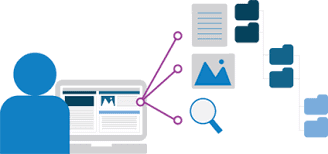
Definition: When an author aims to inform, they usually wish to enlighten their readership about a real-world topic. Often, they will do this by providing lots of facts. Informational texts impart information to the reader to educate them on a given topic.
Examples: Many types of school books are written with the express purpose of informing the reader, such as encyclopedias, recipe books, newspapers and informative texts…
- A news article reporting on a recent event or development provides factual details about what happened, who was involved, and where and when it occurred.
- A scientific journal article describes a research study’s findings, explaining the methodology, results, and implications for further analysis or practical application.
- A travel guidebook that provides detailed information about a particular destination, including its history, culture, attractions, accommodation options, and practical advice for visitors.
How to Identify: In the process of informing the reader, the author will use facts, which is one surefire way to spot the intent to inform.
However, when the author’s purpose is persuasion, they will also likely provide the reader with some facts to convince them of the merits of their particular case. The main difference between the two ways facts are employed is that when the intention is to inform, facts are presented only to teach the reader. When the author aims to persuade, they commonly mask their opinions amid the facts.
Students must become adept at recognizing ‘hidden’ opinions through practice. Teach your students to beware of persuasion masquerading as information!
Please read our complete guide to learn more about writing an information report.
Strategies for being a more INFORMATIVE writer
To become an informative writer, students can employ several strategies to effectively convey information and knowledge clearly and engagingly. Here are five strategies for informative writing:
- Conduct Thorough Research: Before writing, gather information from credible sources such as books, academic journals, reputable websites, and expert interviews. Use reliable data and evidence to support your points. Ensuring the accuracy and reliability of your information is essential in informative writing.
- Organize Information Logically: Structure your writing clearly and logically. Use headings, subheadings, and bullet points to organize information into easily digestible chunks. A well-structured piece helps readers understand complex topics more quickly.
- Use Clear and Concise Language: Aim for clarity and avoid unnecessary jargon or complex language that might confuse your readers. Use simple and concise sentences to deliver information effectively. Make sure to define any technical terms or concepts unfamiliar to your audience.
- Provide Real-Life Examples: Illustrate your points with real-life examples, case studies, or anecdotes. Concrete examples make abstract concepts more understandable and relatable. They also help to keep the reader engaged throughout the piece.
- Incorporate Visual Aids: Whenever possible, use visual aids such as charts, graphs, diagrams, and images to complement your text. Visual elements enhance understanding and retention of information. Be sure to explain the significance of each visual aid in your writing.
Bonus Tip: Practice Summarization: After completing informative writing, practice summarizing the main points. Being able to summarize your work concisely reinforces your understanding of the topic and helps you identify any gaps in your information.
Encourage students to practice these strategies in various writing tasks, such as research papers, reports, and explanatory essays. By mastering informative writing techniques, students can effectively educate their readers, share knowledge, and contribute meaningfully to their academic and professional pursuits.
Author’s Purpose 3: To Entertain
Definition: When an author’s chief purpose is to entertain the reader, they will endeavour to keep things as interesting as possible. Things happen in books written to entertain, whether in an action-packed plot , inventive characterizations, or sharp dialogue.
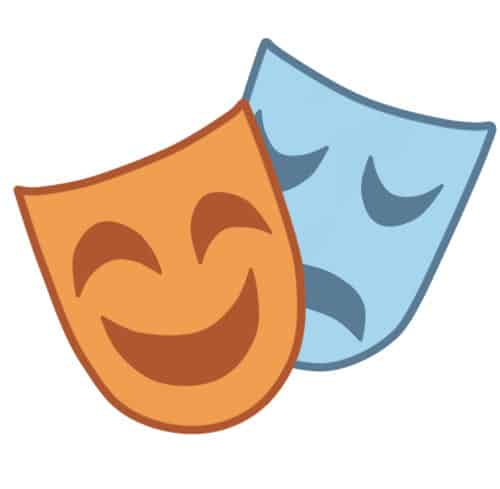
Examples: Not surprisingly, much fiction is written to entertain, especially genre fiction. For example, we find entertaining examples in science fiction, romance, and fantasy.
Here are some more entertaining texts to consider.
- A novel that tells a compelling story engages the reader’s emotions and imagination through vivid characters, evocative settings, and unexpected twists and turns.
- A comedy television script that uses humour and wit to amuse the audience, often by poking fun at everyday situations or societal norms.
- A stand-up comedy routine that relies on the comedian’s storytelling ability and comedic timing to entertain the audience, often by commenting on current events or personal experiences.
How to Identify: When writers attempt to entertain or amuse the reader, they use various techniques to engage their attention. They may employ cliffhangers at the end of a chapter, for example. They may weave humour into their story or even have characters tell jokes. In the case of a thriller, an action-packed scene may follow an action-packed scene as the drama builds to a crescendo. Think of the melodrama of a soap opera here rather than the subtle touch of an arthouse masterpiece.
Strategies for being a more ENTERTAINING writer
To become an entertaining writer, students can use several strategies to captivate their readers and keep them engaged. Here are five effective techniques:
- Use Humor: Inject humour to tickle the reader’s funny bone. Incorporate witty remarks, funny anecdotes, or clever wordplay. Humour lightens the tone of your writing and makes it enjoyable to read. However, be mindful of your audience and ensure your humour is appropriate and relevant to the topic.
- Create Engaging Characters: Whether you’re writing a story, essay, or any other type of content, develop compelling and relatable characters. Readers love connecting with well-developed characters with distinct personalities, flaws, and strengths. Use descriptive language to bring them to life and make them memorable.
- Craft Intriguing Beginnings: Grab your reader’s attention from the very first sentence. Start with a compelling hook that sparks curiosity or creates intrigue. An exciting beginning sets the tone for the rest of the piece and encourages the reader to continue reading.
- Build Suspense and Surprise: Incorporate twists, turns, and surprises into your writing to keep readers on their toes. Building suspense creates anticipation and makes readers eager to discover what happens next. Surprise them with unexpected plot developments or revelations to keep them engaged throughout the piece.
- Use Imagery and Vivid Descriptions : Paint vivid pictures with your words to immerse readers in your writing. Use sensory language and descriptive imagery to transport them to different places, evoke emotions, and create a multisensory experience. Readers love to feel like they’re part of the story, and vivid descriptions help achieve that.
Bonus Tip: Read Widely and Analyze: To become an entertaining writer, read a variety of books, articles, and pieces from different genres and authors. Pay attention to the elements that make their writing engaging and entertaining. Analyze their use of humour, character development, suspense, and descriptions. Learning from the work of accomplished writers can inspire and improve your own writing.
By using these strategies and practising regularly, students can become more entertaining writers, captivating their audience and making their writing a joy to read. Remember, the key to entertaining writing is engaging your readers and leaving them with a positive and memorable experience.
Author’s Purpose 4: To Explain
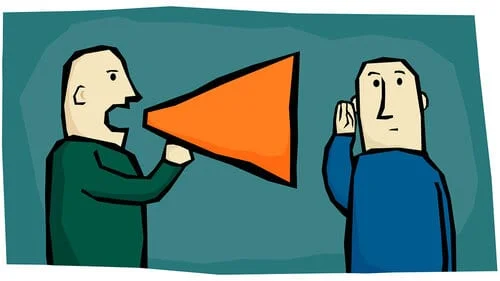
Definition: When writers write to explain, they want to tell the reader how to do something or reveal how something works. This type of writing is about communicating a method or a process.
Examples: Writing to explain can be found in instructions, step-by-step guides, procedural outlines, and recipes such as these…
- A user manual explaining how to operate a piece of machinery or a technical device provides step-by-step instructions and diagrams to help users understand the process.
- A textbook chapter that explains a complex scientific or mathematical concept breaks it into simpler components and provides examples and illustrations to aid comprehension.
- A how-to guide that explains how to complete a specific task or achieve a particular outcome, such as cooking a recipe, gardening, or home repair. It provides a list of materials, step-by-step instructions, and tips to ensure success.
How to Identify: Often, this writing is organized into bulleted or numbered points. As it focuses on telling the reader how to do something, often lots of imperatives will be used within the writing. Diagrams and illustrations are often used to reinforce the text explanations too.
Read our complete guide to explanatory texts here.
Strategies for being a more EXPLANATORY WRITER
To become a more explanatory writer, students can employ several strategies to effectively clarify complex ideas and concepts for their readers. Here are five strategies for explanatory writing:
- Define Technical Terms: When writing about a specialized or technical topic, ensure that you define any relevant terms or jargon that might be unfamiliar to your readers. A clear and concise definition helps readers grasp the meaning of these terms and facilitates better understanding of the content.
- Use Analogies and Comparisons: Use analogies and comparisons to relate complex ideas to more familiar concepts. This technique makes abstract or difficult concepts more relatable and easier to understand. Analogies provide a frame of reference that helps readers connect new information to something they already know.
- Provide Step-by-Step Explanations: Break down complex processes or procedures into step-by-step explanations. This approach helps readers follow the sequence of events or actions and understand the logic behind each step. Use numbered lists or bullet points to make the process visually clear.
- Include Visuals and Diagrams: Supplement your explanatory writing with visual aids such as diagrams, flowcharts, or illustrations. Visuals can enhance understanding and retention of information by visually representing the concepts being discussed.
- Address “Why” and “How”: In explanatory writing, go beyond simply stating “what” happened or what a concept is. Focus on explaining “why” something occurs and “how” it works. Providing the underlying reasons and mechanisms helps readers better understand the subject matter.
Bonus Tip: Review and Revise: After completing your explanatory writing, review your work and assess whether the explanations are clear and comprehensive. Consider seeking feedback from peers or teachers to identify areas needing further clarification or expansion.
Please encourage students to practice these strategies in writing across different subjects and topics. By mastering explanatory writing techniques, students can effectively communicate complex ideas, promote better understanding, and excel academically and professionally.
Author’s Purpose 5: To Describe
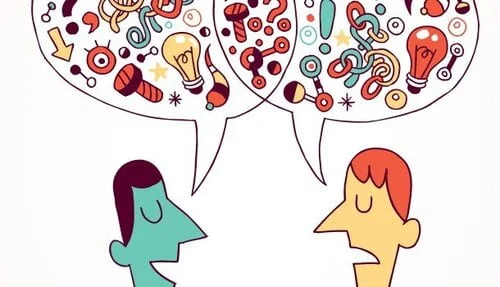
Definition: Writers often use words to describe something in more detail than conveyed in a photograph alone. After all, they say a picture paints a thousand words, and text can help get us beyond the one-dimensional appearance of things.
Examples: We can find lots of descriptive writing in obvious places like short stories, novels and other forms of fiction where the writer wishes to paint a picture in the reader’s imagination. We can also find lots of writing with the purpose of description in nonfiction too – in product descriptions, descriptive essays or these text types…
- A travelogue that describes a particular place, highlighting its natural beauty, cultural attractions, and unique characteristics. The author uses sensory language to create a vivid mental picture in the reader’s mind.
- A painting analysis that describes the colors, shapes, textures, and overall impression of a particular artwork. The author uses descriptive language to evoke the emotions and ideas conveyed by the painting.
- A product review that describes the features, benefits, and drawbacks of a particular item. The author uses descriptive language to give the reader a clear sense of the product and whether it might suit their needs.
How to Identify: In the case of fiction writing which describes, the reader will notice the writer using lots of sensory details in the text. Our senses are how we perceive the world, and to describe their imaginary world, writers will draw heavily on language that appeals to these senses. In both fiction and nonfiction, readers will notice that the writer relies heavily on adjectives.
Strategies for being a more descriptive writer
Becoming a descriptive writer is a valuable skill that allows students to paint vivid pictures with words and immerse readers in their stories. Here are five strategies for students to enhance their descriptive writing:
- Sensory Language: Engage the reader’s senses by incorporating sensory language into your writing. Use descriptive adjectives, adverbs, and strong verbs to create a sensory experience for your audience. For example, instead of saying “the flower was pretty,” describe it as “the delicate, fragrant blossom with hues of vibrant pink and a velvety texture.”
- Show, Don’t Tell: Use the “show, don’t tell” technique to make your writing more descriptive and immersive. Rather than stating emotions or characteristics directly, use descriptive details and actions to show them. For instance, instead of saying “she was scared,” describe how “her heart raced, and her hands trembled as she peeked around the dark corner.”
- Use Metaphors and Similes: Integrate metaphors and similes to add depth and creativity to your descriptions. Compare two unrelated things to create a powerful visual image. For example, “the sun dipped below the horizon like a golden coin slipping into a piggy bank.”
- Focus on Setting: Pay attention to the setting of your story or narrative. Describe the environment, atmosphere, and surroundings in detail. Take the reader on a journey by clearly depicting the location. Let your words bring the setting to life, whether it’s a lush forest, a bustling city street, or a mystical castle.
- Practice Observation: Practice keen observation skills in your daily life. Take note of the world around you—the sights, sounds, smells, tastes, and textures. Observe people, places, and objects with a writer’s eye. By developing a habit of keen observation, you’ll have a rich bank of sensory details to draw from when you write.
Bonus Tip: Revise and Edit: Good descriptive writing often comes through revision and editing. After writing a draft, go back and read your work critically. Look for opportunities to add more descriptive elements, eliminate unnecessary adjectives or cliches, and refine your language to make it more engaging.
By applying these strategies and continually honing your descriptive writing skills, you’ll be able to transport readers to new worlds, evoke emotions, and make your writing more captivating and memorable.
Free Author’s Purpose Anchor Charts & Posters
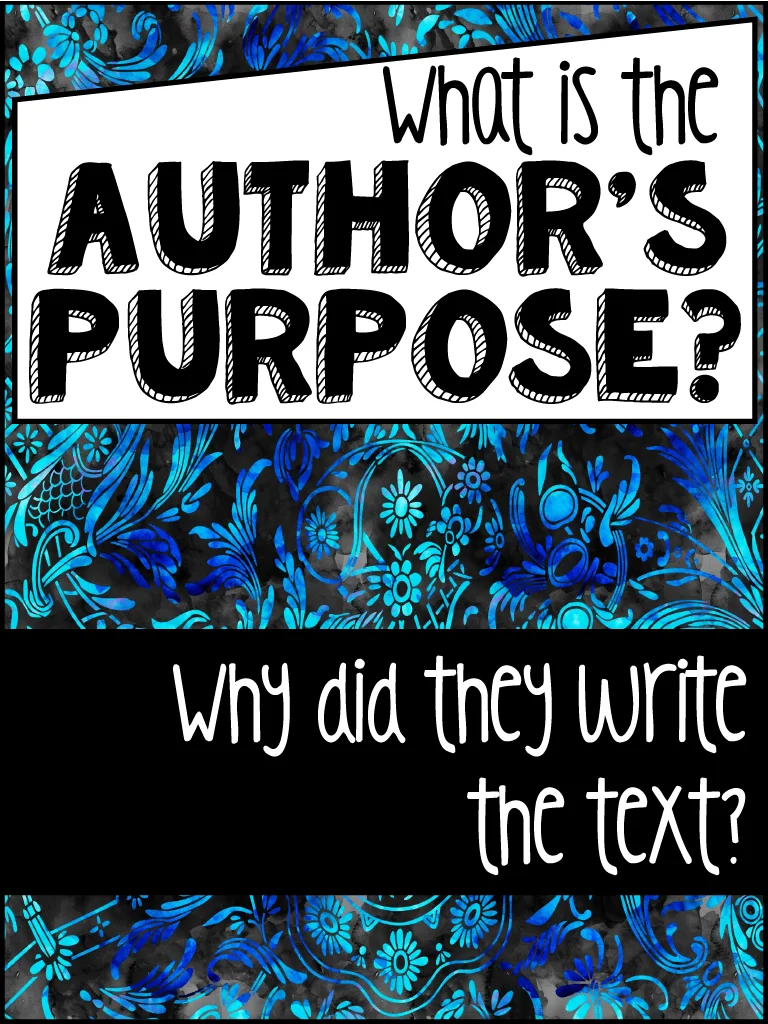
Author’s Purpose Teaching Activities
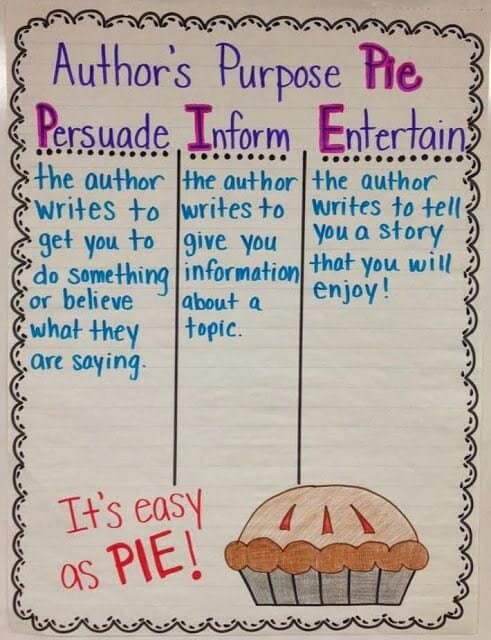
The Author’s Purpose Task 1. The Author’s Purpose Anchor Chart
Whether introducing the general idea of the author’s purpose or working on identifying the specifics of a single purpose, a pie author’s purpose anchor chart can be an excellent resource for students when working independently. Compiling the anchor chart collaboratively with the students can be an effective way for them to reconstruct and reinforce their learning.
The Author’s Purpose Task 2. Gather Real-Life Examples
Challenging students to identify and collect real-life examples of the various types of writing as homework can be a great way to get some hands-on practice. Encourage your students to gather various forms of text together indiscriminately. They then sift through them to categorize them appropriately according to their purpose. The students will soon begin to see that all writing has a purpose. You may also like to make a classroom display of the gathered texts to serve as examples.
The Author’s Purpose Task 3. DIY
One of the most effective ways for students to recognize the authorial intent behind a piece of writing is to gain experience producing writing for various purposes. Design writing tasks with this in mind. For example, if you are focused on writing to persuade, you could challenge the students to produce a script for a radio advertisement. If the focus is entertaining, you could ask the students to write a funny story.
The Author’s Purpose Task 4. Classroom Discussion
When teaching author’s purpose, organize the students into small discussion groups of, say, 4 to 5. Provide each group with copies of sample texts written for various purposes. Students should have some time to read through the texts by themselves. They then work to identify the author’s purpose, making notes as they go. Students can discuss their findings as a group.
Remember: the various purposes are not mutually exclusive; sometimes, a text has more than one purpose. It is possible to be both entertaining and informative, for example. It is essential students recognize this fact. A careful selection of texts can ensure the students can discover this for themselves.
Students need to understand that regardless of the text they are engaged with, every piece of writing has some purpose behind it. It’s important that they work towards recognizing the various features of different types of writing that reveal to the reader just what that purpose is.
Initially, the process of learning to identify the different types of writing and their purposes will require conscious focus on the part of the student. Plenty of opportunities should be created to allow this necessary classroom practice.
However, this practice doesn’t have to be exclusively in the form of discrete lessons on the author’s purpose. Simply asking students what they think the author’s purpose is when reading any text in any context can be a great way to get the ‘reps’ in quickly and frequently.
Eventually, students will begin to recognize the author’s purpose quickly and unconsciously in the writing of others.
Ultimately, this improved comprehension of writing, in general, will benefit students in their own independent writing.
This video is an excellent introductory guide for students looking for a simple visual breakdown of the author’s purpose and how it can impact their approach to writing and assessment.
OTHER GREAT ARTICLES RELATED TO THE AUTHOR’S PURPOSE
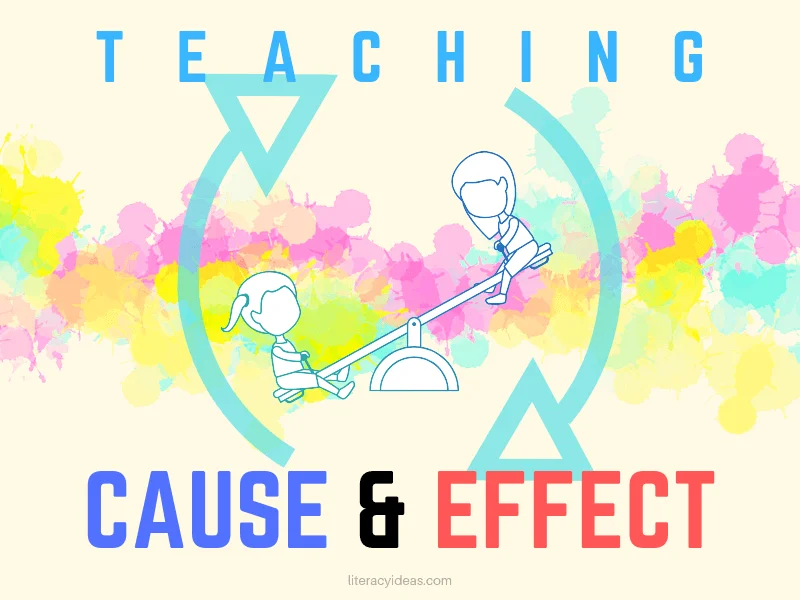
Teaching Cause and Effect in Reading and Writing

The Writing Process
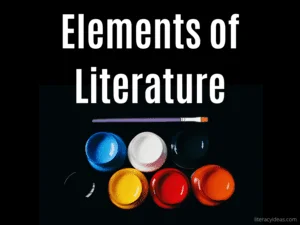
Elements of Literature
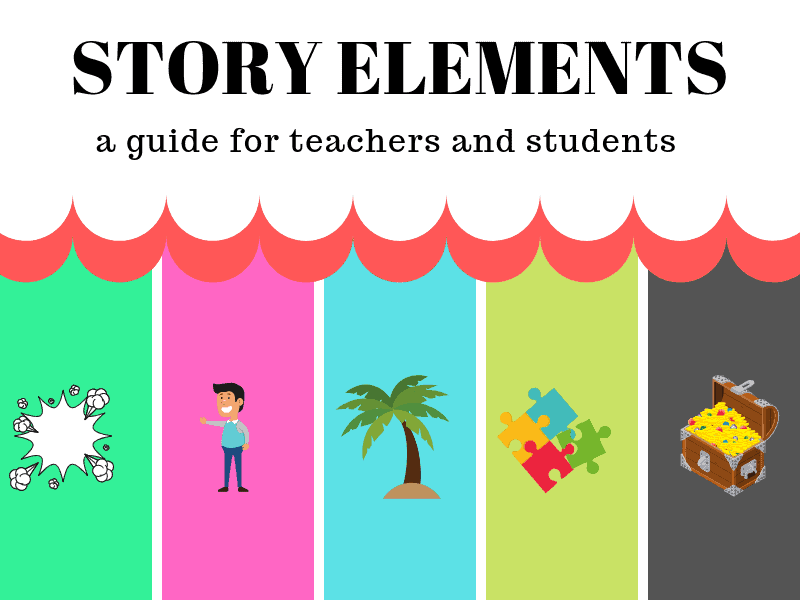
Teaching The 5 Story Elements: A Complete Guide for Teachers & Students
When You Write
What is the Author’s Purpose & Why Does it Matter?
There’s always a reason a writer decides to produce their work. We rarely think about it, but there’s always a motivating factor behind intent and goals they hope to achieve.
This “why” behind the author’s writing is what we call the author’s purpose, and it is the reason the author decided to write about something.
There are billions—maybe more—of reasons a writer decides to write something and when you understand the why behind the words, you can effectively and accurately evaluate their writing.
When you understand the why, you can apprehend what the author is trying to say, grasp the writer’s message, and the intent of a particular piece of literary work.
Without further ado, let me explain what the author’s purpose is and how you can identify it.
What is Author’s Purpose?
Just as I introduced the term, an author’s purpose is the author’s reason for or intent in writing.
In both fiction and non-fiction, the author selects the genre, writing format, and language to suit the author’s purpose.
The writing formats, genres, and vernacular are chosen to communicate a key message to the reader, to entertain the reader, to sway the reader’s opinion, et cetera.
The way an author writes about a topic fulfills their purpose; for example, if they intend to amuse, the writing will have a couple of jokes or anecdotal sections. The author’s purpose is also reflected in the way they title their works, write prefaces, and in their background.
In general, the purposes fall into three main categories, namely persuade, inform, and entertain. The three types of author’s purpose make the acronym PIE.
But, there are many reasons to write, the PIE just represents the three main classes of the author’s purpose .
In the next section, I’m going to elaborate on the various forms of the author’s purpose including the three broader categories that I have introduced.
How useful is the Author’s Purpose?
Understanding the author’s purpose helps readers understand and analyze writing. This analytical advantage helps the reader have an educated point of view. Titles or opening passages act as the text’s signposts, and we can assume what type of text we’re about to read.
If you can identify the author’s purpose, it becomes easier to recognize the proficiencies used to achieve that particular purpose. So, once you identify the author’s purpose, you can recognize the style, tone, word, and content used by the author to communicate their message.
You also get to explore other people’s attitudes, beliefs, or perspectives.
Why does the Author’s Purpose Matter for the Writer?
The intent and manner in which a body of text is written determine how one perceives the information one reads.
Perception is especially important if the author aims to inform, educate, or explain something to the reader. For instance, an author writing an informative piece should provide relevant or reliable information and clearly explain his concepts; otherwise, the reader will think they are trying to be deceptive.
The readers—particularly those reading informative or persuasive pieces—expect authors to support their arguments and demonstrate validity by using autonomous sources as references for their writing.
Likewise, readers expect to be thoroughly entertained by works of fiction.
Types of Author’s Purpose
Mostly, reasons for writing are condensed into 5 broad categories, and here they are:
1. to Persuade
Using this form of author’s purpose, the author tries to sway the reader and make them agree with their opinion, declaration, or stance. The goal is to convince the reader and make them act in a specific way.
To convince a reader to believe a concept or to take a specific course of action, the author backs the idea with facts, proof, and examples.
Authors also have to be creative with their persuasive writing . For instance, apart from form complementary facts and examples, the author has to borrow some forms of entertaining elements and amuse their readers. This makes their writing enjoyable and relatable to some extent, increasing the likelihood of persuading people to take the required course of action.
2. to Inform
When the author’s purpose is to inform or teach the reader, they use expository writing. The author attempts to teach objectively by showing or explaining facts.
When you look at informative writing and persuasive writing, you can identify a common theme: the use of facts. However, the two forms of the author’s purpose use these facts differently. Unlike persuasive writing, which uses facts to convince the reader, informative writing uses facts to educate the reader about a particular subject. With persuasive writing, it’s like there’s a catch: the call to action. But, informative writing only uses facts to educate the reader, not to convince them to take a specific course of action.
Informative writing only seeks to “expose” factual information about a topic for enlightenment.
3. to Entertain
Most fiction books are written to entertain the reader—and, yes, including horror. On the other hand, non-fiction works combine an entertaining element with informative writing.
To entertain, the author tries to keep things as interesting as possible by coming up with fascinating characters , exciting plots, thrilling storylines, and sharp dialogue.
Most narratives, poetry, and plays are written to entertain. Be that as it may, these works of fiction can also be persuasive or informative, but if we fuse values and ideas, changing the reader’s perspective becomes an easier task.
Nonetheless, the entertaining purpose has to dominate, or else, readers are going to lose interest quickly and the informative purpose will be defeated.
4. to Explain
When the author’s purpose is to explain, they write with the intent of telling the reader how to do something or giving details on how something works.
This type of writing is about teaching a method or a process and the text contains explanations that teach readers how a particular process works or the procedure required to do or create something.
5. to Describe
When describing is the author’s purpose, the author uses words to complement images in describing something. This type of writing attempts to give a more detailed description of something, a bit more detail than the “thousand words that a picture paints.”
The writer uses adjectives and images to make the reader feel as though it were their own sensory experience.
Main elements and examples of Author’s Purpose
A great way to identify the author’s purpose is to analyze the whole piece of literature. The first step would be to ask “What is the point of this piece?” One can also look at why it was written, who it was written for, and what effect they wanted it to have on readers.
Another method is to break down the text into different categories of purpose. For example, if someone wants their writing to persuade, they would use rhetorical devices (i.e., logical appeals).
Below are the types of publications dominated by each purpose and the things to look for when identifying the author’s purpose.
Persuasive Purpose
Persuasion is usually found in non-fiction, but countless other fiction books have also been used to persuade the reader.
Propaganda works are top of the list when it comes to persuasion in writing. But we also have other works including:
- Political speeches
- Advertisements
- Infomercial scripts and news editorials meant to persuade the reader
- Fiction writing whose author has an agenda
How to Identify Persuasive Purpose
When trying to identify persuasion in writing, you should ask yourself if the author is attempting to convince the reader to take a specific course of action.
If the author is trying to persuade their readers, they employ several tactics and schemes including hyperboles, forceful phrases, repetition, supporting evidence, imagery, and photographs, and they attack opposing ideas or proponents.
Informative Purpose
Although some works of fiction are also informative, informative writing is commonly found on non-fiction shelves and dominates academic works.
Many types of academic textbooks are written with the primary purpose of informing the reader.
Informative writing is generally found in the following:
- Textbooks
- Encyclopedias
- Recipe books
How to identify Informative Purpose
Just like in persuasive writing, the writer will attempt to inform the reader by feeding them facts.
So, how can you spot a pure intent to inform?
The difference between the two is that an author whose purpose is persuasion is likely going to provide the reader with some facts in an attempt with the primary goal of convincing the reader of the worthwhileness or valuableness of a particular idea, item, situation, et cetera.
On the other hand, in informative writing, facts are used to inform and are not sugar-coated by the author’s opinion, like is the case when the author’s purpose is to persuade.
Entertaining Purpose
The entertaining purpose dominates fiction writing—there’s a huge emphasis placed on entertaining the reader in almost every fiction book.
In almost every type of fiction (be it science fiction, romance, or fantasy), the writer works on an exciting story that will leave his readers craving for more.
The only issue with this purpose is that the adjective ‘entertaining’ is subjective and what entertains one reader may not be so riveting for another.
For example, the type of ‘entertainment’ one gets from romance novels is different from the amusement another gets from reading science fiction.
Although entertainment in writing is mostly used in fiction, non-fiction works also use storytelling—now and then—to keep the reader engaged and drive home a specific point.
How to identify Entertaining Purpose
Identifying works meant to entertain is fairly easy: When an author intends to entertain or amuse the reader, they use a variety of schemes aimed at getting the readers engaged.
The author may insert some humor into their narrative or use dialogue to weave in some jokes.
The writer may also use cliffhangers at the end of a page or chapter to keep the reader interested in the story.
Explaining Purpose
Authors also write to explain a topic or concept, especially in the non-fiction category. Fiction writers also write to explain things, usually not for the sole purpose of explaining that topic, but to help readers understand the plot, an event, a setting, or a character.
This type of purpose is dominant in How-to books, texts with recipes, DIY books, company or school books for orientation, and others.
How to identify Explaining Purpose
Texts with explaining purpose typically have a list of points (using a numbered or bulleted format), use infographics, diagrams, or illustrations.
Explaining purpose also contains a lot of verbs that try to convey directions, instructions, or guidelines.
Every author’s purpose or motive should be more than just entertaining the reader, it should be about more than just telling a good story.
A lot of authors tell stories to accomplish different objectives – some want to teach, provoke thought and debate, or show people that they’re not alone in their struggles. Others—like yours truly—write an article about the different types of Author’s purpose and hope it changes your writing style accordingly.
Authors must take their audience’s needs and interests into account, as well as their purposes for writing when writing something they intend to publish.
The author should find a way to make a piece that both generates interest as well as provides value to their reader.
Recommended Reading...
4 things that will improve your writing imagination, how to write an affirmation, best cities for writers to live and write in, list of interesting places to write that evoke inspiration.
Keep in mind that we may receive commissions when you click our links and make purchases. However, this does not impact our reviews and comparisons. We try our best to keep things fair and balanced, in order to help you make the best choice for you.
As an Amazon Associate, I earn from qualifying purchases.
© 2024 When You Write

Understanding Author’s Purpose: Why It Matters in Writing

Share This Article
Welcome to our exploration of author’s purpose in writing! Have you ever wondered why authors write what they do?
Understanding an author’s purpose is like deciphering the code behind their words. It’s about uncovering the intentions and motivations that drive their writing. In this blog post, we’ll delve into the significance of author’s purpose, its impact on the reader, and why it’s essential for both writers and readers to grasp.
So, let’s embark on this journey to unravel the mysteries of author’s purpose in writing.
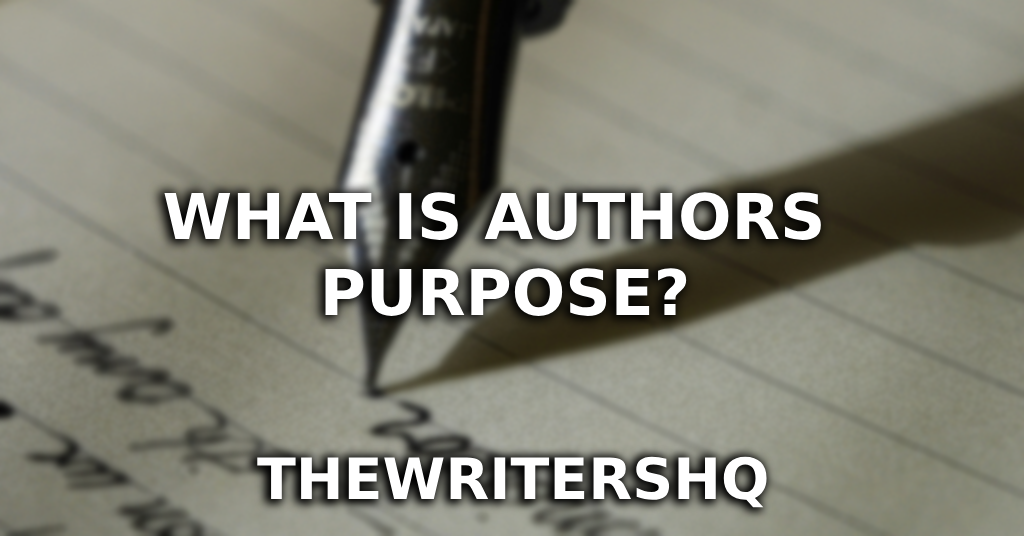
Now, let’s explore why authors write the way they do, and why it’s crucial for both writers and readers to understand this concept.
The purpose behind a piece of writing is like the North Star guiding a ship through the vast ocean of words. Every word, every sentence, every paragraph crafted by an author serves a purpose beyond mere communication. Whether it’s to inform, persuade, entertain, or provoke thought, the author’s purpose shapes the entire composition, influencing the tone, style, and content.
Consider a persuasive essay advocating for environmental conservation. The author’s purpose is to convince readers of the urgency to protect the planet. They employ rhetorical strategies, emotional appeals, and factual evidence to sway the audience towards their viewpoint. Understanding this purpose allows readers to engage critically with the text, evaluating the effectiveness of the author’s arguments and forming informed opinions.

Similarly, in a work of fiction, the author’s purpose might be to transport readers to a different world, evoke emotions, or convey universal truths about the human experience. By recognizing the underlying purpose, readers can immerse themselves more fully in the narrative, empathizing with characters, and grasping the deeper themes woven into the story.
For writers, clarity of purpose is paramount. Before putting pen to paper or fingers to keyboard, authors must ask themselves: What do I hope to achieve with this piece? Whether it’s to entertain, educate, inspire, or provoke change, a clear understanding of their purpose guides every decision—from choosing the right words to structuring the narrative.
Moreover, understanding author’s purpose fosters critical thinking skills essential in today’s information-saturated world. When readers approach a text with an awareness of the author’s intentions, they become active participants in the dialogue, questioning, analyzing, and interpreting the content more effectively.
What Is Authors Purpose?
The author’s purpose refers to the reason behind why a writer creates a particular piece of writing. It encompasses the goals, intentions, or objectives that drive the author to communicate their message to the audience. Understanding the author’s purpose is crucial for readers as it helps them comprehend the text better, evaluate its effectiveness, and engage critically with the content.
What are the different types of authors’ purpose?
There are several different types of author’s purposes, each serving a distinct function in communication. Here are the primary categories:
- To Inform : The author aims to impart knowledge, facts, or information to the audience. This purpose is prevalent in textbooks, news articles, research papers, and instructional manuals. The author seeks to educate the reader about a specific topic, event, or concept.
- To Persuade : In persuasive writing, the author endeavors to sway the audience’s beliefs, opinions, or actions. This could involve presenting arguments, making appeals to emotions or logic, and advocating for a particular viewpoint or course of action. Examples include opinion pieces, advertisements, political speeches, and editorials.
- To Entertain : Authors may write primarily to amuse, entertain, or engage the audience. Fictional works such as novels, short stories, poetry, and plays often serve this purpose. Through storytelling, humor, drama, or suspense, the author seeks to captivate readers and provide enjoyment.
- To Express : Sometimes, authors write to express themselves, their thoughts, feelings, or experiences. This purpose is common in personal narratives, journals, memoirs, and reflective essays. The author may use writing as a form of self-expression, catharsis, or exploration of identity.
- To Instruct : Writing with the intention to instruct involves providing guidance, directions, or step-by-step procedures to help readers learn or accomplish something. This purpose is evident in how-to guides, recipes, manuals, and tutorials. The author aims to facilitate understanding and skill acquisition in the audience.
- To Describe : Authors may write to describe a person, place, object, or event in vivid detail, appealing to the reader’s senses and imagination. Descriptive writing is often found in travelogues, nature writing, and creative non-fiction. The author aims to paint a rich, sensory picture for the reader.
- To Convey Emotion : Some authors write with the primary goal of evoking emotions in the reader. This purpose is prevalent in poetry, lyrical prose, and personal essays. Through the use of imagery, metaphor, and language, the author seeks to elicit feelings of joy, sadness, nostalgia, or empathy.
Understanding these different types of author’s purposes allows readers to engage more deeply with a variety of texts, discerning the intentions behind the writing and interpreting the messages effectively.

What are the key words for author’s purpose?
Key words for identifying the author’s purpose in a text vary depending on the specific purpose. Here are some key words associated with each purpose:
- To Inform : inform, explain, describe, report, detail, educate, illustrate, clarify
- To Persuade : persuade, convince, argue, advocate, influence, convince, sway, urge, recommend
- To Entertain : entertain, amuse, delight, captivate, engage, charm, entertain, divert, thrill
- To Express : express, share, reveal, convey, articulate, narrate, recount, reflect, disclose
- To Instruct : instruct, guide, teach, demonstrate, show, explain, clarify, direct, advise
- To Describe : describe, depict, portray, characterize, illustrate, paint, evoke, capture, depict
- To Convey Emotion : evoke, express, convey, evoke, stir, elicit, provoke, arouse, communicate
What are the characteristics of the author’s purpose?
- Clarity : The purpose should be clear and evident throughout the text.
- Consistency : The content should align with the stated purpose.
- Tone : The tone of the writing often reflects the author’s purpose (e.g., formal for informing, persuasive for persuading, emotive for conveying emotion).
- Content : The type of information, arguments, or storytelling techniques used correspond to the purpose.
- Audience Engagement : The author aims to engage the audience according to their purpose (e.g., providing information, sparking emotions, guiding actions).
Why does purpose matter in writing?
Understanding the purpose of writing is paramount because it serves as the guiding force behind every word, sentence, and paragraph. Here’s why purpose matters in writing:
- Clarity of Communication : Identifying the purpose helps writers articulate their message clearly and effectively. Whether the goal is to inform, persuade, entertain, or express, knowing the purpose ensures that the content is tailored to achieve that objective.
- Audience Engagement : Purpose-driven writing resonates with the intended audience, capturing their attention and maintaining their interest. By aligning the content with the audience’s expectations and needs, writers can create meaningful connections and foster engagement.
- Effectiveness of Communication : Understanding the purpose allows writers to choose the most appropriate language, tone, and style to convey their message. This enhances the effectiveness of communication, ensuring that the intended message is conveyed accurately and convincingly.
- Achieving Goals : Writing with a clear purpose helps writers achieve their goals, whether it’s to inform, persuade, entertain, or inspire action. By keeping the purpose in mind throughout the writing process, writers can stay focused and effectively achieve their objectives.
- Impact on Readers : Purposeful writing has a significant impact on readers, influencing their perceptions, beliefs, and actions. Whether the goal is to educate, motivate, or entertain, purpose-driven writing can inspire readers, provoke thought, and evoke emotions, leaving a lasting impression.
Overall, purpose serves as the compass that guides writers through the writing process, ensuring that their message is clear, engaging, and impactful.
What is a top priority for all proposal writers?
For proposal writers, a top priority is to clearly articulate the purpose and objectives of the proposal. Here’s why:
- Clarity of Intent : Clearly stating the purpose of the proposal helps stakeholders understand the goals, objectives, and desired outcomes. This ensures alignment and clarity of intent, reducing ambiguity and misinterpretation.
- Audience Engagement : Clearly defining the purpose of the proposal captures the attention of stakeholders and engages them in the proposed initiative or project. It communicates the relevance and importance of the proposal, motivating stakeholders to invest time and resources in its success.
- Alignment of Strategies : A clearly defined purpose enables proposal writers to develop strategies and action plans that align with the intended objectives. It provides a framework for decision-making and prioritization, ensuring that resources are allocated effectively to achieve the desired outcomes.
- Measurable Outcomes : Defining the purpose of the proposal allows for the establishment of measurable outcomes and success criteria. This enables stakeholders to assess the effectiveness and impact of the proposed initiative, facilitating accountability and evaluation.
Overall, clearly articulating the purpose of the proposal is essential for gaining stakeholder buy-in, guiding decision-making, and ultimately achieving the desired results.

In conclusion, understanding the purpose of writing is fundamental to effective communication. Whether informing, persuading, entertaining, or expressing, the purpose serves as the driving force behind every word penned by the author. It guides the tone, style, and content of the writing, ensuring clarity, engagement, and impact on the audience.
Recognizing the writer’s purpose and tone empowers readers to interpret and evaluate the content critically, fostering deeper engagement and meaningful dialogue. For proposal writers, clearly articulating the purpose of the proposal is paramount for gaining stakeholder buy-in, guiding decision-making, and ultimately achieving success.
In essence, purpose matters in writing because it provides direction, relevance, and significance to the text. By understanding the purpose behind the words, both writers and readers can navigate the complexities of communication with clarity, purpose, and effectiveness.
About Sara Cook
Hi, I am Sara! I am the founder of TheWritersHQ! I have loved writing and reading since I was a little kid! Stephen King has my heart! I started this site to share my knowledge and build on my passion!
Thewritershq
REVIEW GUIDELINES
THEWritershq 2023 ©
21 Author’s Purpose Examples

Chris Drew (PhD)
Dr. Chris Drew is the founder of the Helpful Professor. He holds a PhD in education and has published over 20 articles in scholarly journals. He is the former editor of the Journal of Learning Development in Higher Education. [Image Descriptor: Photo of Chris]
Learn about our Editorial Process

The author’s purpose of a text refers to why they wrote the text .
It;s important to know the author’s purpose for a range of reasons, including:
- Media Literacy : We want to make sure we’re not tricked by the author. When reading an article online, for example, we want to figure out what the author’s purpose is in order to determine whether they’re going to write with a particular political bias.
- Determining Meaning: We might also want to know the author’s purpose in order to infer and predict what the underlying message might be. If an author’s job is to inform, we can read the text closely in order to examine its logic; but if the purpose is to entertain, we can consume the text with less of a critical lens.
- Understand Genre Convention : If we know the author’s purpose, we can predict and develop expectations about how the piece will be written. For example, persuasive texts should cite sources, while in reflective texts, we should expect first-person language and more intimate language.
Below are a range of possible purposes that authors may have when writing texts.
Author’s Purpose Examples
1. to inform.
Common Text Genres: News articles, Research papers, Textbooks, Biographies, Manuals.
Texts designed to inform tend to seek an objective stance, where the author presents facts, data, or truths to the reader with the sole intention of educating or delivering important information to the reader. It is common, for example, in news articles, where journalists must adhere to journalistic ethics and ensure the information is entirely factual. This is also often the purpose of non-fiction books, academic writing, scientific articles, and of course, this very website you’re reading right now.
Example of an Informative Text A National Geographic article on climate change informs readers about the state of the planet, providing facts and figures about global warming, melting ice caps, and so on.
2. To Entertain
Common Text Genres: Novels, Short stories, Poetry, Plays, Comics
This type of writing is meant to captivate the reader’s imagination and provide enjoyment. Here, the content needs to be delivered in a way that doesn’t bore and keeps the reader compelled to keep reading. To do this, the writing might be humorous, suspenseful, mysterious, or touching, depending on the genre. The author may also create characters, plot, and settings to keep the reader engaged and entertained, as with novels.
Example of an Entertaining Text A well-known example is J.K. Rowling’s “Harry Potter” series, which was written with the primary goal of entertaining readers with its magical world and captivating story.
3. To Persuade
Common Text Genres: Advertisements, Speeches, Opinion columns, Cover letters, Product reviews
In persuasive texts, the author’s main purpose is to convince the reader to accept a particular point of view or to take a specific action. This involves the use of arguments, logic, evidence, and emotional appeals. Persuasive writing can be found in speeches, advertisements, and opinion editorials. To examine some key techniques and strategies authors use to persuade, consult my article on the thirty types of persuasion in literature .
Example of a Persuasive Text A classic example is Martin Luther King Jr.’s “I Have a Dream” speech, in which he persuasively argues for the end of racial discrimination in the United States.
4. To Describe
Common Text Genres: Travelogues, Food reviews, Personal essays, Descriptive poetry, Nature writing
Descriptive texts aim to paint a vivid picture in the reader’s mind. These sorts of texts can take us away to a different place and draw us into a complex world created by the author. For example, the author uses detailed and evocative descriptions to convey a scene, object, person, or feeling. The goal is to make the reader see, hear, smell, taste, or feel what is being described. This can be seen in many forms of writing, but is most evident in fiction, poetry, and travel writing, and can be paired with other author purposes, such as entertainment.
Example of a Descriptive Text An example of descriptive writing is F. Scott Fitzgerald’s “The Great Gatsby”, especially in its portrayal of the extravagant lifestyle of Jay Gatsby.
5. To Explain
Common Text Genres: How-to articles, Technical manuals, FAQs, Cookbooks, Explanatory journalism
In this type of writing, the author seeks to make the reader understand a process, concept, or idea. The writing breaks down complex subjects into simpler, more digestible parts. The author provides step-by-step explanations, examples, and definitions to aid understanding. This can be seen in how-to guides, tutorials, and expository essays . Of course, this purpose overlaps significantly with to inform , but tends to be more step-by-step or strips complex ideas into clear-to-understand chunks of information .
Example of an Explanatory Text A real-world example is Stephen Hawking’s “A Brief History of Time”, in which complex topics such as the Big Bang, black holes, and light cones are explained in a manner accessible to non-scientists.
6. To Analyze
Common Text Genres: Critical essays, Business reports, Scientific research papers, Market research, Literary analysis
Authors who write to analyze seek to break down a complex concept, event, or piece of work into smaller parts in order to better understand it. Analytical writing looks closely at all the components of a topic and how they work together. It’s about making connections and recognizing patterns. It could, for example, aim to identify flaws in a topic, or draw connections, similarities and differences, between multiple different concepts. You’ll commonly find these types of texts in professional contexts, such as reports provided to a company to give them guidance that helps them make better business decisions.
Example of an Analytical Text “The Art of War” by Sun Tzu offers a comprehensive analysis of warfare strategies, breaking down the complexities of warfare into key principles.
7. To Teach
Common Text Genres: Textbooks, How-to guides, Cookbooks, Self-help books
The author aims to impart knowledge or skills to the reader. These texts often provide step-by-step instructions or delve deep into a topic to ensure understanding. The goal is not only to inform but to enable the reader to perform a task or understand a concept independently. Examples of texts like this can include self-help books and textbooks, which might also contain ‘tasks’, ‘homework’ or ‘revision quizzes’ at the end of each chapter.
Example of an Educational Text “On Writing: A Memoir of the Craft” by Stephen King teaches readers about the art of writing and the life of a writer.
8. To Argue
Common Text Genres: Opinion editorials, Political speeches, Legal briefs, Persuasive essays
For these sorts of texts, the author’s purpose is to persuade the reader to accept a particular perspective, worldview, or ideology, often presenting a thesis and supporting it with evidence and logical reasoning. The goal is to make a case and convince the reader of its validity. Authors could use pathos , meaning emotion , to argue a point (e.g. appealing to a person’s emotional side), or logos , meaning logic (e.g. setting out a clear and logical explanation of why the author’s perspective is correct).
Example of an Argumentative Text A famous example is “A Vindication of the Rights of Woman” by Mary Wollstonecraft, where she argues for women’s rights and equality.
9. To Inspire
Common Text Genres: Motivational speeches, Inspirational books, Success stories, Motivational posters
Authors with this purpose want to stimulate their readers to act or create a change, instill hope, or provoke a sense of awe. These writings often share success stories, motivational thoughts, or beautiful descriptions of nature or humanity. A wide range of texts aim to inspire, from novels about amazing journeys, biographies about great people from history, and even people writing sales copy for brands.
Example of an Inspirational Text “I Know Why the Caged Bird Sings” by Maya Angelou is a work meant to inspire readers through its tale of overcoming adversity.
10. To Reflect
Common Text Genres: Diaries or journals, Vlogs and blogs, Retirement speeches, Reflective essays
In a reflective piece, the aim of the author is to share personal experiences, thoughts, or insights in an introspective manner. The goal is to convey the author’s personal journey or internal thought process. These texts often give readers a window into the author’s mind, and they may invite readers to reflect on their own experiences as well. Sometimes, the author will write the piece as a tool for self-improvement , such as to identify where they made mistakes or weaknesses in their processes, so they don’t make those mistakes next time.
Example of a Reflective Text “Meditations” by Marcus Aurelius is a series of personal writings, reflecting the author’s stoic philosophy and ideas on life.
11. To Share
Common Text Genres: Personal Blogs, Social Media Posts, Personal Essays, Anecdotes , Letters.
In this type of writing, the author aims to share personal experiences, thoughts, ideas, or information with the reader. The writer may offer insights into their lives, discuss their passions, or recount an event that happened to them. We might see this, for example, for someone who writes detailed reflections on their travels in their travel blog, or even a personal email back to friends and family each week.
Example of a Text designed to Share Elizabeth Gilbert’s “Eat, Pray, Love” is a memoir where the author shares her journey of self-discovery as she travels through Italy, India, and Indonesia.
12. To Record
Common Text Genres: Historical Accounts, Diaries, Journals, Biographies, Documentaries.
When writing to record, the author aims to create a detailed and factual account of events or experiences, either for personal reflection or to inform future generations. This type of writing can also serve to preserve personal or historical memories. We see this, for example, in historians’ writing as well as in some journalistic work, such as in the New York Times, which has become known as the paper of record for its longevity in recording important moments in US history.
Example of a Text of Record Anne Frank’s “The Diary of a Young Girl” is a historical record of her experiences hiding during the Nazi occupation of the Netherlands.
13. To Provoke Thought
Common Text Genres: Philosophical Works, Thought-Provoking Novels, Reflective Essays, Social Commentaries.
Authors who write to provoke thought aim to challenge their readers, pushing them to think more deeply about certain topics or to see things from a different perspective. They may raise complex questions, explore ambiguities, or critique societal norms. Such authors might be even aiming to get the reader upset, animated, or otherwise achieving cognitive dissonance in order to shift their thinking in some way.
Example of a Thought-Provoking Text George Orwell’s “1984” provokes thought about totalitarianism, surveillance, and individual freedom.
14. To Criticize
Common Text Genres: Reviews, Critical Essays, Satire, Polemics, Critiques .
When authors write to criticize, their aim is to express disapproval, dissent, or disagreement. They may critique a person, an idea, a societal trend, a piece of work, etc. They typically present their criticisms in a structured, reasoned manner, often supported by evidence. We see this regularly, for example, in ‘letters to the editor’ in newspapers, where everyday people can write into a newspaper in order to share their thoughts or rants for everyone to read.
Example of a Critical Text In his essay “Self-Reliance,” Ralph Waldo Emerson criticizes societal conformity and advocates for individualism.
15. To Predict
Common Text Genres: Speculative Fiction, Futurism Articles, Predictive Analytics Reports, Science Fiction.
Authors who write to predict aim to forecast future events or trends. These predictions could be based on current data, societal trends, scientific understanding, or simply imaginative speculation. This can be anything from a piece written by an economist or political scientist who’s predicting social trends that are upcoming, to a sci-fi novel that attempts to predict a dystopian future where AI has taken over the world!
Example of a Predictive Text In Aldous Huxley’s “Brave New World,” the author predicts a future society characterized by technological advancements, consumerism, and a lack of individual freedom.
16. To Express Emotion
Common Text Genres: Poetry, Personal Essays, Novels, Letters, Memoirs.
When authors write to express emotion, their main goal is to convey their feelings, or the feelings of someone else, to the reader. They might explore their emotional reaction to events, or evoke emotion in the reader. This is a common purpose of poetry and song lyrics, which have long genre-histories of evoking emotions in audiences, especially when the lyrics are read or sung to a live audience.
Example of an Emotional Text Sylvia Plath’s poetry, such as in her collection “Ariel,” often expresses deep personal emotions, particularly her struggles with depression.
17. To Explore
Common Text Genres: Adventure Novels, Travel Writing, Scientific Papers, Experimental Poetry, Philosophy Books.
Authors who write to explore aim to delve deeply into a topic, concept, or place. This might involve exploring physical environments, such as in travel writing, or abstract concepts , as in philosophical or scientific texts. Exploratory writing may start without a clear end-goal, and can ramble its way to an unknown conclusion.
Example of an Exploratory Text Charles Darwin’s “On the Origin of Species” explores the concept of natural selection and evolution.
18. To Satirize
Common Text Genres: Satirical Novels, Political Cartoons, Satirical Essays, Parodies.
Satirical writing uses humor, irony, exaggeration, or ridicule to expose and criticize people’s stupidity or vices, particularly in the context of contemporary politics and other societal issues. It could, for example, be a satirical novel which tries to undermine or make a joke out of other famous texts or genres. This, obviously, overlaps with the author purpose of to entertain but may also have elements of social commentary.
Example of a Satirical Text Jonathan Swift’s “Gulliver’s Travels” satirizes human nature and the “travelers’ tales” literary subgenre.
19. To Commemorate
Common Text Genres: Eulogies, Obituaries, Commemorative Speeches, Historical Fiction.
Writing to commemorate aims to honor or remember a person, event, or idea. It often involves highlighting the subject’s significance or impact. For example, a person might write a piece that commemorates veterans on Vetertan’s Day. Similarly, an obituary commemorates a person’s life and attempts to sum up their achievements and the things that were of great importance to them.
Example of a Commemorative Text The Gettysburg Address by Abraham Lincoln was a speech to commemorate the lives lost during the Civil War and to reaffirm the principles of liberty and equality.
20. To Plead
Common Text Genres: Petitions, Open Letters, Advocacy Articles, Speeches.
When authors write to plead, they aim to make an urgent appeal or request for something. This could be a plea for action, support, change, etc. These texts commonly ask for social change or a change in perspective from the reader. The author may be pleading for themselves and their family (e.g. a refugee who pleads their case in a newspaper op-ed) or for the less advantaged (e.g. an activist pleading for people to donate to children in poverty).
Example of a Text that Pleads a Case In “Letter from Birmingham Jail,” Martin Luther King Jr. pleads for an end to racial segregation and appeals for justice and equality.
21. To Celebrate
Common Text Genres: Commendatory Speeches, Reviews, Praises, Tributes.
Authors who write to celebrate aim to acknowledge, praise, or express gratitude for someone or something. They might celebrate a person, a culture, a historical event, an achievement, or a simple joy of life. A celebratory text, for example, might be a speech someone gives at a graduation ceremony, with the intention of celebrating the graduates’ successes in finally completing their degree.
Example of a Celebratory Text Maya Angelou’s poem “Still I Rise” celebrates the resilience and strength of African American women.
See Also: Examples of Text Types
Texts are written for a range of reasons. By determining the intentions of the author, we can begin to infer genre expectations, whether there will be much bias, or indeed, whether we can simply read for entertainment and throw caution to the wind! Similarly, if you want to be a writer, it’s worth examining other author’s texts that have similar purposes, and take notes on their style and turns-of-phrase to learn from them.

- Chris Drew (PhD) https://helpfulprofessor.com/author/chris-drew-phd/ 101 Class Group Name Ideas (for School Students)
- Chris Drew (PhD) https://helpfulprofessor.com/author/chris-drew-phd/ 19 Top Cognitive Psychology Theories (Explained)
- Chris Drew (PhD) https://helpfulprofessor.com/author/chris-drew-phd/ 119 Bloom’s Taxonomy Examples
- Chris Drew (PhD) https://helpfulprofessor.com/author/chris-drew-phd/ All 6 Levels of Understanding (on Bloom’s Taxonomy)
Leave a Comment Cancel Reply
Your email address will not be published. Required fields are marked *

Reading Skills
Analyzing author’s purpose and point of view.
- The Albert Team
- Last Updated On: June 16, 2023
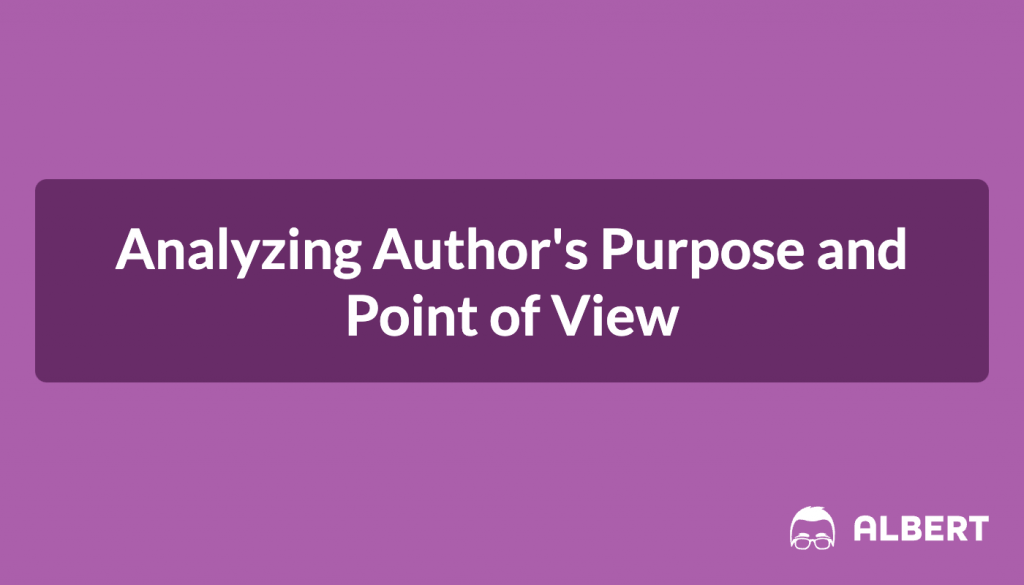
Introduction
Do you ever wonder why writers write the way they do? Why they pick certain words or tell a story in a specific way? The reason behind this is called the author’s purpose and point of view. It’s like a secret code that helps you understand what they really mean.
In this blog post, we’ll learn about this secret code. You’ll learn to figure out what an author is trying to say, and how they see the world. This will help you understand books, articles, and even posts on social media even better!

What is the Author’s Point of View?
When you read a text, it’s important to think about the author’s point of view. The author’s point of view refers to their unique perspective, opinions, beliefs, and biases that shape how they present information or tell a story. They might see things in a way that’s different from you because of their own experiences, beliefs, and backgrounds.
Understanding an author’s point of view allows us to dig deeper into the underlying motivations and intentions behind their words. It can also help you find hidden messages in the text. So, how do we figure out an author’s point of view? Let’s talk about some ways to do this.

How to Determine the Author’s Point of View
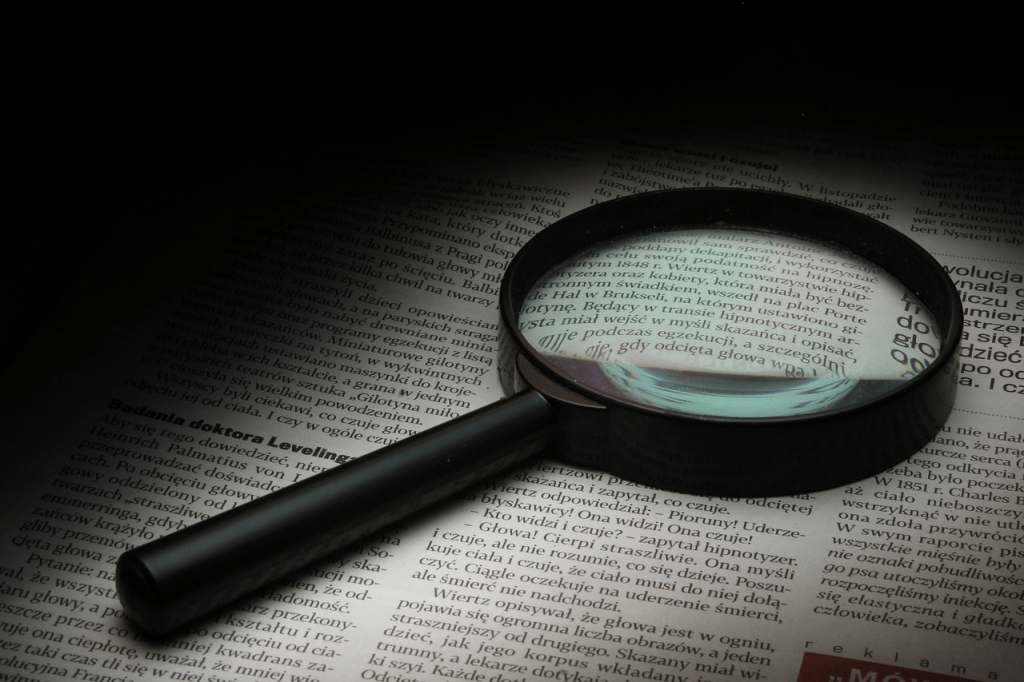
You might think figuring out an author’s point of view is hard, but it can be fun, like solving a mystery! Here are some tips to help you do it:
- Look at the Words : Notice the words the author uses. Are they showing strong feelings or opinions? The way they write can give you hints about what they think and feel.
- Learn About the Author : Knowing more about the author can help you understand their point of view. What kind of job do they have? Where are they from? What are some important things that have happened to them?
- Think About Why the Author Wrote the Text: Why do you think the author wrote this? Do they want to teach you something, make you think, or make you laugh? Knowing this can help you understand what they’re trying to say.
- Notice Patterns: Look for ideas that come up again and again. These can tell you a lot about what the author thinks is important.
- Think About Who the Author is Writing For: Authors often write for specific groups of people. The way they write can tell you a lot about who they are trying to talk to.
Remember, figuring out an author’s point of view is about understanding the text better, not about deciding if they are right or wrong.
Why is the Author’s Point of View Important?
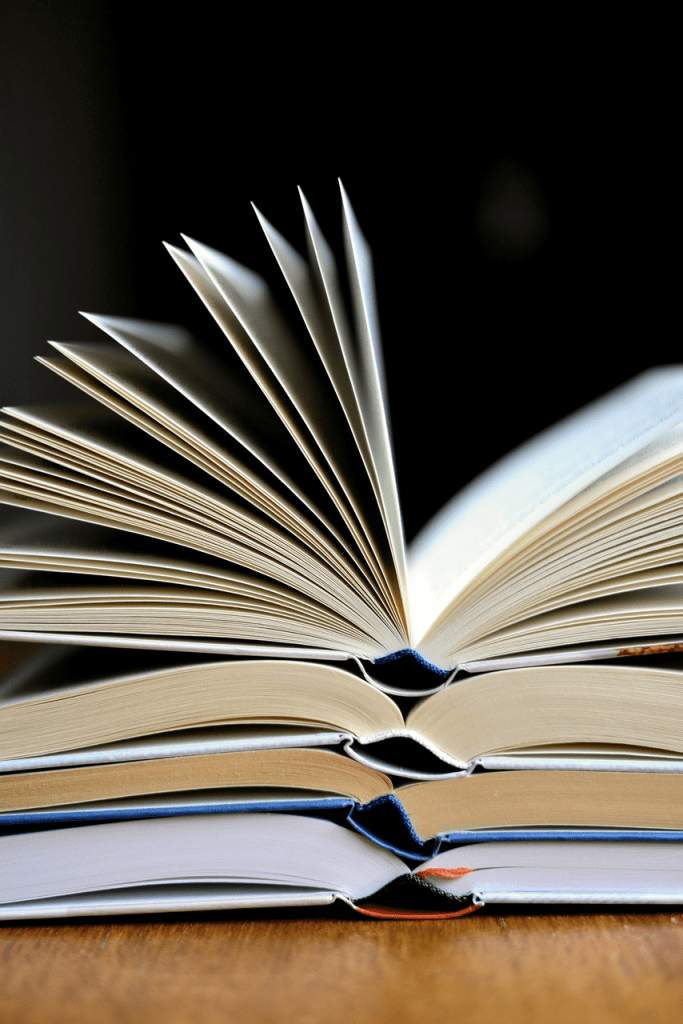
Why should we care about the author’s point of view? Here are some good reasons:
- Contextual Understanding : The author’s point of view helps us make sense of the text. It shows us why they chose to write the way they did and what they want us to learn.
- Uncovering Bias: No author can be totally unbiased. By understanding their point of view, we can see their own opinions in the text. This helps us think critically about what we’re reading.
- Evaluating Objectivity: Knowing the author’s point of view helps us see if the text is objective (without personal feelings) or subjective (based on personal feelings). This can help us decide if we can trust the information in the text.
- Enhancing Interpretation: Understanding the author’s point of view helps us understand what the text really means. We can see what arguments the author is making and think more deeply about the text.
- Encouraging Empathy and Perspective: By seeing things from the author’s point of view, we can better understand people who are different from us. This helps us be more understanding and open-minded.
As you can see, knowing the author’s point of view helps us understand and think about what we read in a deeper way. It makes us better readers and thinkers!
How to Determine the Author’s Purpose

In addition to analyzing the author’s point of view, it is also key to examine the author’s purpose. Here are some tips to help you figure out the author’s purpose:
- Check the Type of Text: Look at what kind of text it is. Is it a story, a news article, or maybe an essay? This can give you clues about why the author wrote it.
- Look at the Words and Tone: Pay attention to the words the author uses and how they write. If they use a lot of emotion, they might be trying to persuade you. If they give a lot of facts, they’re probably trying to inform you.
- Think About Who It’s Written For: Who is the author writing for? For example, a text for experts might be trying to give new information, while a text for kids might be trying to teach something in a fun way.
- Look for Main Ideas: What are the big ideas in the text? What is the author trying to say? This can give you a hint about why they wrote it.
- Check for Facts or Stories: Does the author use a lot of facts and data? Or do they tell stories? This can also help you figure out the author’s purpose.
- Think About the Time and Place: When and where was the text written? Sometimes, this can tell you a lot about why the author wrote the text.
Remember, you might not always see the author’s purpose right away. But if you look closely, you can usually find clues that will help you figure it out.
How Text Structure Contributes to the Author’s Purpose
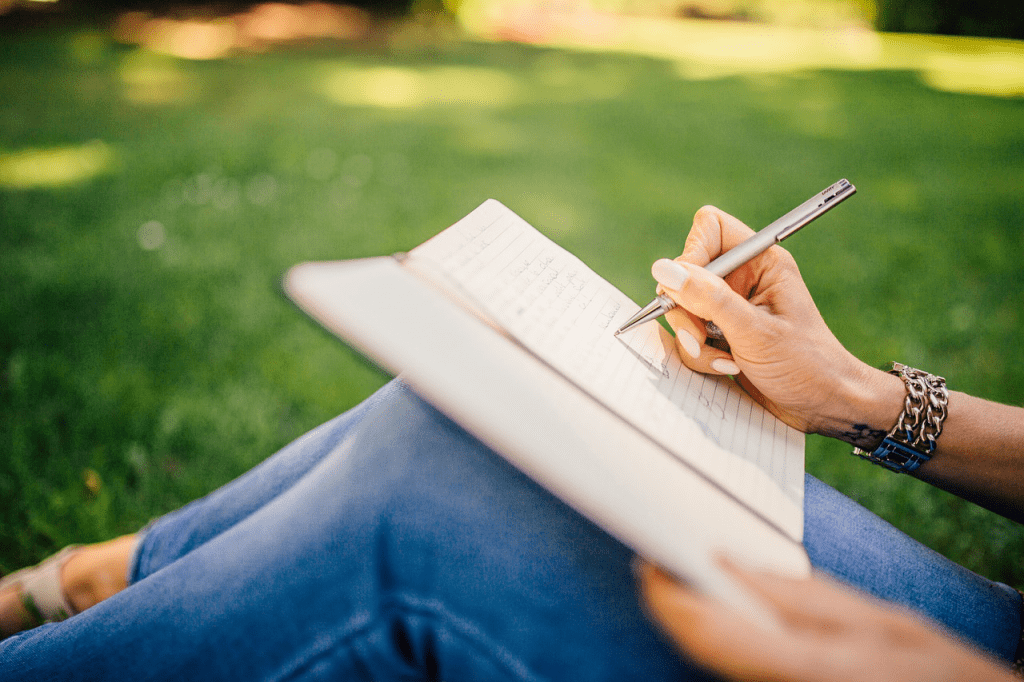
Text structure, or the way a text is put together, plays a significant role in conveying the author’s purpose and shaping the overall message of a written piece. The way a text is organized and structured can greatly influence how the information is presented and how the reader engages with it. Here are some ways that text structure contributes to the author’s purpose
- Order of Ideas: Authors choose how to order their ideas for a reason. They might use a time order, cause and effect, or compare and contrast to help get their point across.
- Important Points Stand Out: Authors use things like headings or bullet points to show important ideas. This can tell us what the author thinks is most important.
- Storytelling Techniques: In stories, authors might play with the order of events, use flashbacks, or tell the story from different viewpoints. This can make the story more interesting or help make a point.
- Persuasion Techniques: If the author is trying to convince you of something, they will present their arguments in a careful order. They might present a problem, then give evidence, then propose a solution.
- Easy to Follow: A well-organized text is easier to understand. The way the author organizes the text can help you follow their ideas and understand what they want to say.
By looking at how a text is structured, you can get a better idea of what the author’s purpose is. So, next time you read something, pay attention to how it’s put together!
Classroom Application: What is the Author’s Purpose in this Passage?
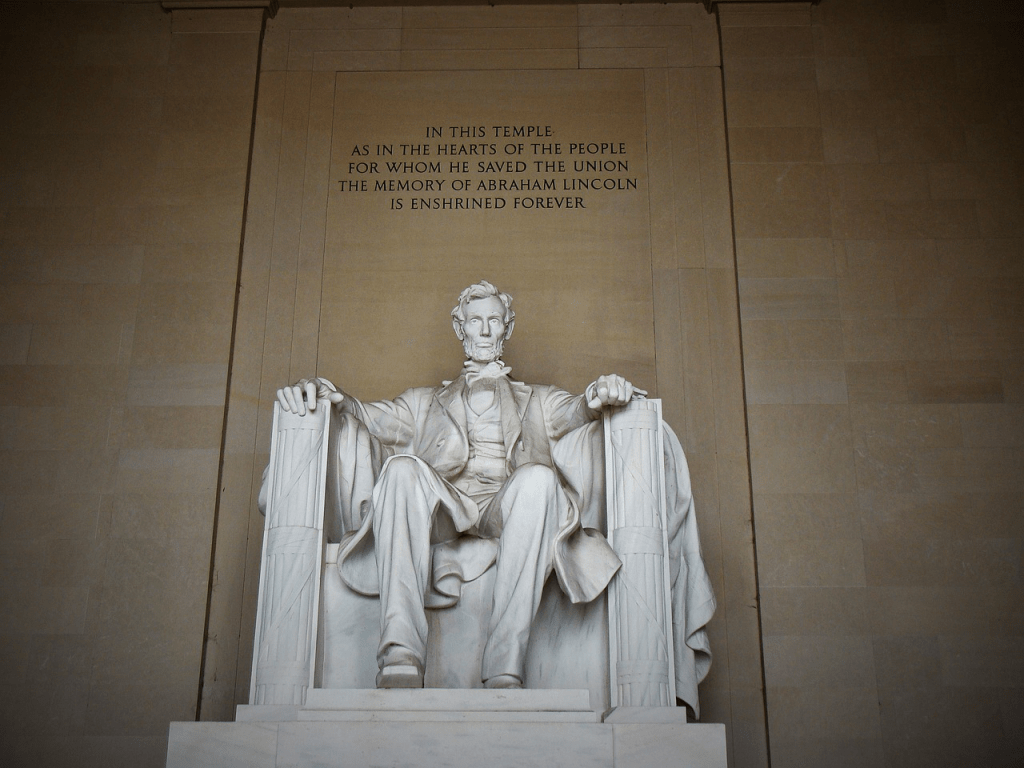
Analyzing the author’s purpose becomes more engaging and relatable when you can apply your skills to historical speeches. One exemplary text for this exercise is Abraham Lincoln’s Second Inaugural Address. Use this step-by-step guide to analyze the author’s purpose in this significant piece of writing:
Step 1: Background Research:
First, start by gathering some background information about Abraham Lincoln, his presidency, and the context of the Second Inaugural Address. Learn about the Civil War and how it impacted the nation during that time.
Step 2: Reading and Annotation:
Next, read the Second Inaugural Address carefully, highlighting or underlining key statements and phrases. Take note of any repeated themes or arguments and mark moments where Lincoln’s perspective or tone seems particularly important.
Step 3: Identifying the Type of Text:
Consider the type of text you are analyzing, which is a presidential inauguration speech. Think about the common purposes associated with such speeches, like inspiring unity, expressing gratitude, or outlining a vision for the nation.
Step 4: Analyzing Language and Tone:
Pay close attention to Lincoln’s choice of language and tone throughout the address. Look for emotional or persuasive language and note instances of unity, humility, or calls for reconciliation. Consider how these choices contribute to Lincoln’s purpose.
Step 5: Reflecting on Historical Context:
Think about the historical context surrounding the Second Inaugural Address. For example, you could reflect on the divided nation during the Civil War and how it affected Lincoln’s presidency. Then, connect these historical events to Lincoln’s purpose in addressing the nation during such a critical time.
Step 6: Identifying Key Statements and Arguments:
Identify the central statements and arguments made by Lincoln in the address. Consider how these statements reflect his purpose and the message he wanted to convey. Think critically about the implications of these arguments.
Step 7: Considering the Audience:
Reflect on the intended audience of the Second Inaugural Address, which includes both supporters and opponents of Lincoln. Analyze how Lincoln’s purpose might have been influenced by this diverse audience and how he aimed to unite the nation through his words.
Step 8: Drawing Conclusions:
Based on the evidence you gathered from the text analysis and understanding of the historical context, draw conclusions about Lincoln’s purpose in delivering the Second Inaugural Address. Make sure to support your conclusions with evidence from the text.
Step 9: Classroom Discussion and Reflection:
Finally, wrap up by participating in a classroom discussion, where you can share your analysis and engage in thoughtful reflection. Compare and contrast interpretations with your classmates to deepen your understanding of the author’s purpose and the complexities of historical texts.
By following these steps to analyze Lincoln’s Second Inaugural Address, you’ll develop critical thinking skills, gain historical understanding, and appreciate the power of language in shaping significant historical events. This assignment will enhance your ability to analyze texts and provide you with a deeper insight into the intentions of historical figures like Abraham Lincoln.
Analyzing an author’s purpose and point of view is a skill that empowers you to unlock the hidden meanings within texts. By understanding why authors write the way they do and recognizing their unique perspectives, you can gain valuable insights into the world of written communication.
Practice Makes Perfect
Albert provides engaging practice questions for key skills like analyzing the author’s purpose as well as a wide range of texts for students to analyze and interpret. For more practice with the skills covered in this post, check out our Author’s Purpose questions in our Short Readings course, which uses short passages to reinforce fundamental reading skills. Readers at all ability levels may enjoy our Leveled Readings course, which offers Lexile® leveled passages focused on a unifying essential question that keeps all students on the same page regardless of reading level. Learn more about the Lexile Framework here !
With our easy-to-use interface and informative feedback, Albert.io is the perfect tool for learning how to determine the author’s purpose and point of view and helping students develop a deeper understanding of the texts they encounter.
Interested in a school license?
Popular posts.

AP® Score Calculators
Simulate how different MCQ and FRQ scores translate into AP® scores

AP® Review Guides
The ultimate review guides for AP® subjects to help you plan and structure your prep.

Core Subject Review Guides
Review the most important topics in Physics and Algebra 1 .

SAT® Score Calculator
See how scores on each section impacts your overall SAT® score

ACT® Score Calculator
See how scores on each section impacts your overall ACT® score

Grammar Review Hub
Comprehensive review of grammar skills

AP® Posters
Download updated posters summarizing the main topics and structure for each AP® exam.
Purdue Online Writing Lab Purdue OWL® College of Liberal Arts

Welcome to the Purdue OWL
This page is brought to you by the OWL at Purdue University. When printing this page, you must include the entire legal notice.
Copyright ©1995-2018 by The Writing Lab & The OWL at Purdue and Purdue University. All rights reserved. This material may not be published, reproduced, broadcast, rewritten, or redistributed without permission. Use of this site constitutes acceptance of our terms and conditions of fair use.
Authors and audiences both have a wide range of purposes for communicating. The importance of purpose in rhetorical situations cannot be overstated. It is the varied purposes of a rhetorical situation that determine how an author communicates a text and how audiences receive a text. Rhetorical situations rarely have only one purpose. Authors and audiences tend to bring their own purposes (and often multiple purposes each) to a rhetorical situation, and these purposes may conflict or complement each other depending on the efforts of both authors and audiences.

Authors’ purposes
In the textbook Writing Today , Johnson-Sheehan and Paine discuss purpose more specifically in terms of the author of a text. They suggest that most texts written in college or in the workplace often fill one of two broader purposes: to be informative or to be persuasive. Under each of these two broad purposes, they identify a host of more specific purposes. The following table is not exhaustive; authors could easily have purposes that are not listed on this table.
Table: Author Purposes
|
|
|
| to inform | to persuade |
| to describe | to convince |
| to define | to influence |
| to review | to argue |
| to notify | to recommend |
| to instruct | to change |
| to advise | to advocate |
| to announce | to urge |
| to explain | to defend |
| to demonstrate | to justify |
| to illustrate | to support |
(Johnson-Sheehan & Paine 17)
Audiences’ purposes
Authors’ purposes tend to be almost exclusive active if only because authors conscientiously create texts for specific audiences. But audiences’ purposes may range from more passive purpose to more active purposes.
Table: Audience Purposes
|
|
|
| to receive notice | to examine |
| to feel reassured | to quantify |
| to feel a sense of unity | to assess |
| to be entertained | to make informed decisions |
| to receive instruction | to interpret |
| to enjoy | to evaluate |
| to hear advice | to judge |
| to be inspired | to resist change |
| to review | to criticize |
| to understand | to ridicule |
| to learn | to disprove |
The Role of Purposes
Authors’ and audiences’ purposes in communicating determine the basic rationale behind other decisions both authors and audiences make (such as what to write or speak about, or whom to listen to, or what medium to use, or what setting to read in, among others). An author’s purpose in communicating could be to instruct, persuade, inform, entertain, educate, startle, excite, sadden, enlighten, punish, console, or many, many others. Like authors, audiences have varied purposes for reading, listening to, or otherwise appreciating pieces of communication. Audiences may seek to be instructed, persuaded, informed, entertained, educated, startled, excited, saddened, enlightened, punished, consoled, or many, many others. Authors’ and audiences’ purposes are only limited to what authors and audiences want to accomplish in their moments of communication. There are as many purposes for communicating as there are words to describe those purposes.
Attitude is related to purpose and is a much-overlooked element of rhetorical situations. But attitude affects a great deal of how a rhetorical situation unfolds. Consider if an author communicates with a flippant attitude as opposed to a serious attitude, or with drama as opposed to comedy, or calmly as opposed to excitedly. Depending on authors’ purposes, audiences’ specific qualities, the nature of the context, and other factors, any of these attitudes could either help or hinder authors in their efforts to communicate depending on the other factors in any given rhetorical situation. Like authors, audiences bring diverse attitudes to how they appreciate different pieces of communication. The audience’s attitude while reading, listening, observing, or whatnot affects how they receive and process the communication they receive.
What is The Author's Purpose?
- Test Prep Strategies
- Study Skills
- SAT Test Prep
- ACT Test Prep
- GRE Test Prep
- LSAT Test Prep
- Certifications
- Homework Help
- Private School
- College Admissions
- College Life
- Graduate School
- Business School
- Distance Learning
:max_bytes(150000):strip_icc():format(webp)/kr01-56a946be5f9b58b7d0f9d8d0.jpg)
- B.A., English, University of Michigan
Here's your heads up for the day: most standardized tests have a reading comprehension section. I'm fairly certain you knew that, but in case you didn't, you're welcome. What you may not have known is that in most reading comprehension sections, you will be called upon to answer questions about the author's purpose, along with other concepts like main idea , vocabulary in context , inferences and more. If you have no idea what author's purpose means you're going to have a hard time finding it, huh? I thought so. Take a peek below to read a little more about this reading skill and how you can find it in those long reading passages on standardized tests.
Author's Purpose Practice
Author's Purpose Basics
The author's purpose is basically the reason he or she chose to act in a particular way, whether that's writing the passage, selecting a phrase, using a word, etc. It differs from the main idea in that author's purpose not the point you're supposed to get or understand; rather, it's the why behind why the author picked up a pen or selected those words in the first place. It can be difficult to determine because, after all, you may not be inside the mind if the writer. You may not actually know why she or he chose to include a particular phrase or idea. The good news? The majority of author's purpose questions will come in multiple choice format. So you won't have to come up with the reason for an author's behavior. You'll just need to select the best choice.
If you're trying to determine the author's purpose on a standardized test, your question may look a little something like this:
1. The author most likely mentions the Depression in lines 33 - 34 to: A. identify the primary purpose for Social Security. B. criticize FDR's adoption of a program that would run out of money. C. contrast the effectiveness of the Social Security Program with that of family care. D. list another factor that contributed to the need for the Social Security Program.
Author's Purpose Key Words
There are a few key words associated with the author's purpose. Often times, you can narrow down what an author was trying to accomplish by looking at the language he or she used while writing. Take a look at the words below. The bold word will be used in the answer choices. The phrase following the bold words is an explanation of what it really means when you see it. If you click on the "How to Find the Author's Purpose" below, you'll see each of these phrases explained thoroughly so you can understand how to determine when each is being used in context.
- Compare: Author wanted to show similarities between ideas
- Contrast: Author wanted to show differences between ideas
- Criticize: Author wanted to give a negative opinion of an idea
- Describe/Illustrate: Author wanted to paint a picture of an idea
- Explain: Author wanted to break down an idea into simpler terms
- Identify/List: Author wanted to tell the reader about an idea or series of ideas
- Intensify: Author wanted to make an idea greater
- Suggest: Author wanted to propose an idea
If you can master these bad boys, then you'll have a much easier time answering those reading comprehension questions on your next standardized test, mostly because these key words are often used so very often in those questions! Bonus!
How to Find The Author's Purpose
Sometimes, reading for the author's purpose is as simple as just that; you read, and you figure out that the writer really hated the Red Sox and wanted to criticize the whole franchise. Other times, it isn't so simple, so it's good to have a technique to guide you when you're looking!
- Report Card Comments for English Classes at School
- Finding the Author's Purpose
- Worksheet 1: Author's Purpose
- Reading Comprehension Practice Questions
- How to Find the Main Idea
- What Is Author's Tone?
- Understanding Vocabulary Words in Context
- High School Vocabulary in Context Worksheets
- Worksheet 2: Author's Purpose
- Top 5 ACT Reading Strategies
- Inference: A Critical Assumption
- LSAT Sections: What's on the LSAT?
- How to Boost Reading Comprehension With Reciprocal Teaching
- 3 Tricks to Figure out the Author's Tone
- Third Grade Reading Comprehension Books
- How to Find the Main Idea - Worksheet
Evaluating a Text
Main idea, purpose, & audience.

Text evaluation and analysis usually start with the core elements of that text: main idea, purpose, and audience. An author needs to consider all three of these elements before writing, as they help determine the author’s content and language. As a reader, it’s important to ascertain these aspects of a text which exist as a foundation for the author’s content and language.
Always start with the main idea. Main ideas may be stated directly in the text or implied; you need to read a text carefully in order to determine the main idea. Put the main idea into your own words, so that it’s expressed in a way that makes sense to you. Then ask and answer the following basic questions about that main idea:
- Is the main idea reasonable/believable to most readers?
- Is the main idea clear and if not, why do you think the author embedded it?
- Is the main idea the author’s opinion, or is it something that the author asserts about an issue?
Asking and answering these questions should help you get a sense of the author’s intention in the text, and lead into considering the author’s purpose.
Main idea and purpose are intricately linked. There are a few basic purposes for texts; figuring out the basic purpose leads to more nuanced text analysis based on its purpose. Basic purposes of a text include:
- to inform – to describe, explain, or teach something to your audience
- to persuade/argue – to get your audience to do something, to take a particular action, or to think in a certain way
- to entertain – to provide your audience with insight into a different reality, distraction, and/or enjoyment
The following video more fully explains these different purposes of a text, and adds a fourth, to share insights or feelings.
Main Idea & Purpose Determine Analysis
The author’s main idea and purpose in writing a text determine whether you need to analyze and evaluate the text. They also determine the pieces of the text you should analyze—content or language or both.
If the purpose is to persuade or argue
You always need to analyze the text to see if the main idea is justified. Do the supporting ideas relate to and develop the main idea? Is the supporting evidence taken from recognized, valid sources? Is the author arguing via language instead of evidence or facts? Persuasion and argument need to present logically valid information to make the reader agree intellectually (not emotionally) with the main idea.
If the purpose is to inform
You usually need to analyze the text, since the text needs to present valid information in as objective a way as possible, in order to meet its purpose of explaining concepts so a reader understands.
If the purpose is to entertain
You may or may not need to analyze the text. Writing that entertains does not necessarily have to be either logical or complete in order to accomplish its purpose. You may want to analyze the text for language, though, to see how the author manipulates language to accomplish their purpose.

Who are the author’s intended readers? Figuring out this will help you understand an author’s approach to providing the main idea with a particular purpose. Does the audience know little or nothing about the topic, or are they already knowledgeable? Is the audience’s knowledge at beginner or expert level, somewhere in between, or mixed? Does the audience include people who may be skeptical of the author’s ideas? Does the audience include people who outright oppose the author’s ideas? As you can see, asking and answering questions about audience can help an author determine the type and amount of content to include in a text. As a reader, it’s important to figure out the author’s intended audience, to help you analyze the type, amount, and appropriateness of the text’s information.
The following video presents the concept of audience from a writer’s perspective, but the concepts are applicable to you as a reader who needs to consider audience as a foundation for evaluating a text.
You may also want to link to one of Purdue’s Online Writing Lab’s page on Author and Audience to get a sense of the wide array of variables that can influence an author’s purpose, and that an author may consider about an audience.
Read the article “ Forget Shorter Showers ” by Derrick Jensen.
Note that most of the Try It exercises in this section of the text will be based on this article, so you should read carefully, annotate, take notes, and apply appropriate strategies for reading to understand a text.
Then answer the following questions about the article’s main idea, purpose, and audience.
Which selection best represents the author’s main idea?
- We have it in our power and right to take action to stop the industrial economy over-using and wasting our natural resources.
- We are victims of a campaign of misdirection, being told and accepting that our personal use of natural resources is both the cause of scarcity and the solution to preservation.
- Because we have accepted our identities as consumers, we reduce our forms of political existence to consuming and not consuming.
- Simple living is better for the planet than over-consumption.
Sentence 1 is the best answer. Although sentences 2 and 3 extract main ideas from the text, they are key supporting points that help lead to the author’s conclusion and main idea.
Which selection best represents the author’s purpose?
- to inform readers about the actual use of resources by individuals vs. the industrial economy
- to persuade readers to consider taking action against an unjust situation that assigns blame to individuals instead of big business in regard to the depletion of natural resources
- to persuade readers to re-think their personal attempts to live more simply and more “green”
- to entertain readers interested in nature with accusations against the industrial economy
Selection 2 best represents the author’s purpose. The author’s purpose is to get readers thinking about conservation of resources in order to spur them to action against a system that, in his opinion, exploits those resources as well as individuals. His purpose is both to inform and persuade, but persuasion seems to take precedence, as he both starts and ends with a reminder about historically justified instances of activism.
Who comprises the author’s audience and what cues can you use to determine that audience?
The author is writing to an audience of readers who are interested in nature and conservation. If you look on the Orion website and read the “About” section on Mission and History, you’ll see that this publication started as a magazine about nature and grew from there. Based on reading the text, the author’s intended audience has the following characteristics:
- Educated – The author assumes that readers know about WWII, the Civil Rights Act of 1974, and other historic events. The author also uses language such as “systematic misdirection,” “solar photovoltaics,” and even “consensus” (instead of agreement).
- Concerned about the environment – because they are reading this magazine in the first place
- Willing to entertain the idea of taking action to improve quality of life and preserve resources
- Comfortable enough (with themselves? with their social status? with their personal philosophies?) to feel that their voices might make a difference if they choose to protest the current use of natural resources
- Purpose & Audience. Authored by : Susan Oaks. Project : Introduction to College Reading & Writing. License : CC BY-NC: Attribution-NonCommercial
- video The Author's Purpose. Authored by : Marc Franco. Provided by : Snap Language. Located at : https://www.youtube.com/watch?v=z6H2NLPqWtI . License : Other . License Terms : YouTube video
- video Audience: Introduction & Overview. Authored by : Gracemarie Mike and Daniel Liddle. Provided by : The Purdue Online Writing Lab. Located at : https://www.youtube.com/watch?v=4_ypxLRYsrE . License : Other . License Terms : YouTube video
- image of woman with a stack of books instead of a head, facing shelves of books. Authored by : Gerd Altmann. Provided by : Pixabay. Located at : https://pixabay.com/photos/books-question-mark-student-stack-4158244/ . License : CC0: No Rights Reserved
- image of the word Evaluation. Authored by : Gerd Altmann. Provided by : Pixabay. Located at : https://pixabay.com/illustrations/district-evaluation-assessment-1264717/ . License : CC0: No Rights Reserved

Privacy Policy

A Guide To The Author’s Purpose

Table of Contents
What does persuasion mean, some examples of persuasion in writing:, clues to look for persuasive purpose:, what does inform mean, some examples of information in writing:, clues to look for informative purpose:, what does entertain mean, some examples of entertainment in writing:, clues to look for entertaining purpose:, what does explain mean, some examples of explanation in writing:, clues to look for explaining purpose:, what does describe mean, some examples of description in writing:, clues to look for descriptive purpose:.
An essential concept in mastering reading is understanding the why behind the words. What is the author trying to say? What is the motivation, the message, the intent of the literary work?
The reason why the author writes a particular piece of fiction or non-fiction is called the author’s purpose. Authors choose the genre, writing format, and language based on the author’s purpose. Therefore, a student cannot assume the purpose because the text falls in a specific genre category or because it’s a story and not a textbook.
What is authors purpose and how does the reader identify the author’s purpose?
The 5 Types of Author’s Purpose
To persuade.
This is an extremely common form of writing where the author attempts to convince the reader to agree with them or for the reader to act in a specific way. Persuasive writing is easily recognized by a call to action in the text or the author sharing their opinion backed with facts, proof, and examples to help convince the reader.
While it’s commonly found in non-fiction, many well-written fiction books are also attempting to persuade the reader.
- Propaganda pieces that influence people to think or act in a certain way
- Speeches that attempts to convince the reader to agree with the speaker’s opinion
- Advertisements that persuade a person to buy the product or service
- Commercial and news editorials that inform and persuade the reader
- The author’s purpose is in the motivation behind an essay.
- Fiction writing where the author has an agenda intentionally or unintentionally.
- Is the author attempting to convince the reader to take a specific action or believe something specific?
- Does the author make use of hyperbole?
- Does the author use forceful phrases?
- Does the author attack viewpoints that oppose theirs?
- Is the writing filled with imagery and graphics to extract specific types of emotions from the reader?
When the author’s purpose is to inform, they write objectively and use facts. Although both informative writing and persuasive writing use facts, the goals are different. Persuasive writing uses facts to support an opinion; it’s part of the process to convince the reader and present itself as “informative.” Informative writing, however, uses facts to educate the reader about a certain topic. There is no hidden goal; the author presents informative facts to teach the reader and is not interested in convincing the reader to believe or act in a certain way.
You’ll often find a liberal dose of text features in an text when an author’s purpose is to inform.
Informative writing is generally found in non-fiction writing. Fiction may also present information throughout the text.
- School textbooks are written for the primary purpose of teaching students about a subject.
- Recipe books provide the ingredients and methods of how to cook a specific dish.
- Newspapers inform the public about current events and news happening locally, nationally, or internationally.
- Encyclopedias and dictionaries define, explain, and inform about a word or subject.
- Does the author use facts to inform and educate without wanting to persuade the reader?
- Is the content objective where the author does not give their opinion to convince the student in a specific way?
- Does the text contain hidden opinions that are not informative but persuasive?
- Did the reader learn something when reading the text?
To Entertain
The author’s purpose in fiction books is generally to entertain the reader. Non-fiction texts, however, may also be entertaining while informing the reader too. Fiction writers use fascinating characters, sharp dialogue, an exciting storyline, or an action-packed plot to keep readers interested and engaged. Readers may prefer reading genres that they find more enjoyable than others.
Although entertainment in writing is generally found in fiction, non-fiction writers also may use storytelling to engage the reader and accentuate a point.
- Genre fiction authors write for readers who enjoy reading the type of stories typical to that genre. Readers could be picky with the genres they prefer. For example, science fiction readers may not find romance novels as entertaining, and romance lovers may not enjoy suspense that much.
- The author tells an entertaining story that the reader wants to read.
- Does the writer use techniques to keep the reader engaged?
- Do chapters end with cliffhangers or in such a way that all the questions aren’t answered entice the reader to read the next chapter to find out what happened next?
- Does the story or text contain humor, funny incidents, or characters telling jokes?
- Do action-packed scenes build on each other to increase suspense?
- Does the reader identify with a character or circumstances that invite them to read further?
Authors write explanatory text when they want to bring across a particular method or process. The text contains explanations to help the reader understand how the process works or what the procedure requires to do, create, or complete something.
Authors who write to explain a topic generally write non-fiction books. An author may also explain a topic in a novel, for example, how a drone works, to better understand the situation or character better.
- How-to books explain to the reader how to do something or how something works.
- A book with recipes is a classic example of explaining a method to the reader. The reader follows the instructions to cook that specific dish.
- Step-by-step guides like DIY methods instruct the reader through each step by explaining what to do to complete that step.
- Companies may use procedural outlines in orientation or training outlining the steps and the order the actions should take place.
- Does the writing contain a list of points in numbered or bullet format?
- Are there infographics, diagrams, or illustrations that reinforce the written explanation?
- Is the writing action orientated with lots of verbs that portray commands, orders, or instructions?
- Does the text focus on telling the reader how to do something?
To Describe
If describing is the author’s purpose, then the text may contain adjectives and images to illustrate something in detail. The writer may write with such detail that the reader experiences the imagery through their sense as if it were real.
Fiction authors use descriptions in their writing to engage and entertain the reader. Non-fiction may also use detailed reports expanding on a point.
- Novels and short stories contain descriptions to paint a picture drawing the reader into the story.
- Businesses use product descriptions to show potential customer what they will buy.
- Descriptive essays and other non-fiction writing use descriptions to help the reader understand the point, product, or service.
- Does the writer use adjectives to describe something?
- Does the author use language that appeals to the reader’s senses?
Retha Groenewald is a professional writer working for FractusLearning. When not working with Fractus, she is web copywriter for the Christian market. Her writing is featured at Christian Web Copywriter and at Writing That Breathes Life.
Leave a Reply Cancel reply
Your email address will not be published. Required fields are marked *
This site uses Akismet to reduce spam. Learn how your comment data is processed .

Want to create or adapt books like this? Learn more about how Pressbooks supports open publishing practices.
6.1 Purpose, Audience, Tone, and Content
Learning objectives.
- Identify the four common academic purposes.
- Identify audience, tone, and content.
- Apply purpose, audience, tone, and content to a specific assignment.
Imagine reading one long block of text, with each idea blurring into the next. Even if you are reading a thrilling novel or an interesting news article, you will likely lose interest in what the author has to say very quickly. During the writing process, it is helpful to position yourself as a reader. Ask yourself whether you can focus easily on each point you make. One technique that effective writers use is to begin a fresh paragraph for each new idea they introduce.
Paragraphs separate ideas into logical, manageable chunks. One paragraph focuses on only one main idea and presents coherent sentences to support that one point. Because all the sentences in one paragraph support the same point, a paragraph may stand on its own. To create longer assignments and to discuss more than one point, writers group together paragraphs.
Three elements shape the content of each paragraph:
- Purpose . The reason the writer composes the paragraph.
- Tone . The attitude the writer conveys about the paragraph’s subject.
- Audience . The individual or group whom the writer intends to address.
Figure 6.1 Purpose, Audience, Tone, and Content Triangle
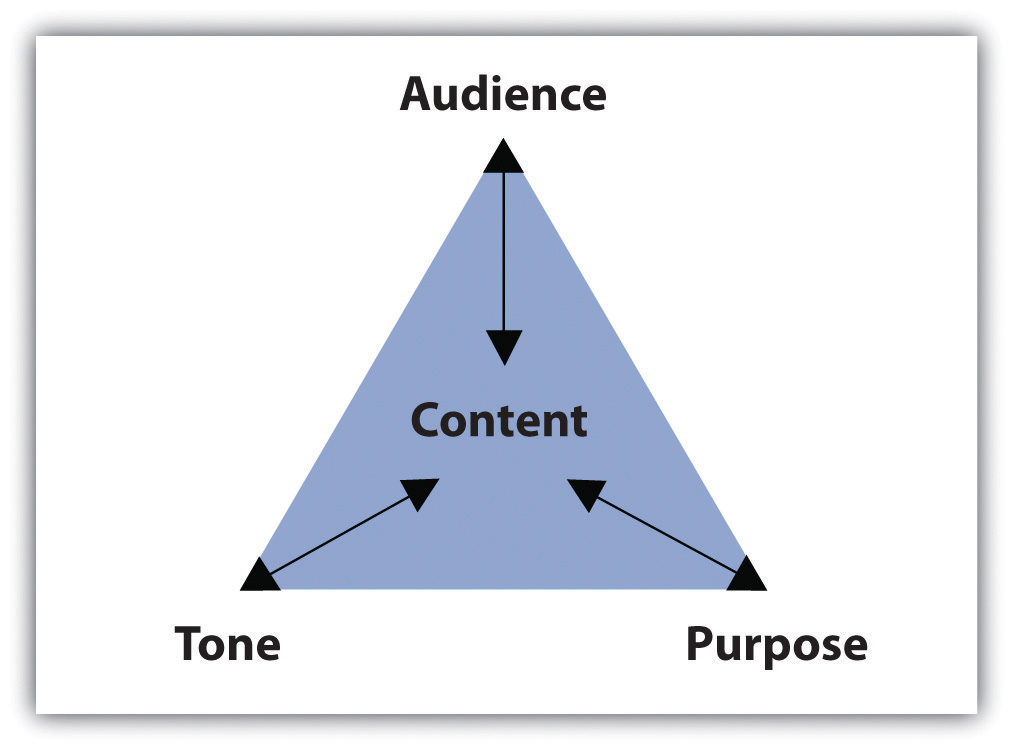
The assignment’s purpose, audience, and tone dictate what the paragraph covers and how it will support one main point. This section covers how purpose, audience, and tone affect reading and writing paragraphs.
Identifying Common Academic Purposes
The purpose for a piece of writing identifies the reason you write a particular document. Basically, the purpose of a piece of writing answers the question “Why?” For example, why write a play? To entertain a packed theater. Why write instructions to the babysitter? To inform him or her of your schedule and rules. Why write a letter to your congressman? To persuade him to address your community’s needs.
In academic settings, the reasons for writing fulfill four main purposes: to summarize, to analyze, to synthesize, and to evaluate. You will encounter these four purposes not only as you read for your classes but also as you read for work or pleasure. Because reading and writing work together, your writing skills will improve as you read. To learn more about reading in the writing process, see Chapter 8 “The Writing Process: How Do I Begin?” .
Eventually, your instructors will ask you to complete assignments specifically designed to meet one of the four purposes. As you will see, the purpose for writing will guide you through each part of the paper, helping you make decisions about content and style. For now, identifying these purposes by reading paragraphs will prepare you to write individual paragraphs and to build longer assignments.
Summary Paragraphs
A summary shrinks a large amount of information into only the essentials. You probably summarize events, books, and movies daily. Think about the last blockbuster movie you saw or the last novel you read. Chances are, at some point in a casual conversation with a friend, coworker, or classmate, you compressed all the action in a two-hour film or in a two-hundred-page book into a brief description of the major plot movements. While in conversation, you probably described the major highlights, or the main points in just a few sentences, using your own vocabulary and manner of speaking.
Similarly, a summary paragraph condenses a long piece of writing into a smaller paragraph by extracting only the vital information. A summary uses only the writer’s own words. Like the summary’s purpose in daily conversation, the purpose of an academic summary paragraph is to maintain all the essential information from a longer document. Although shorter than the original piece of writing, a summary should still communicate all the key points and key support. In other words, summary paragraphs should be succinct and to the point.
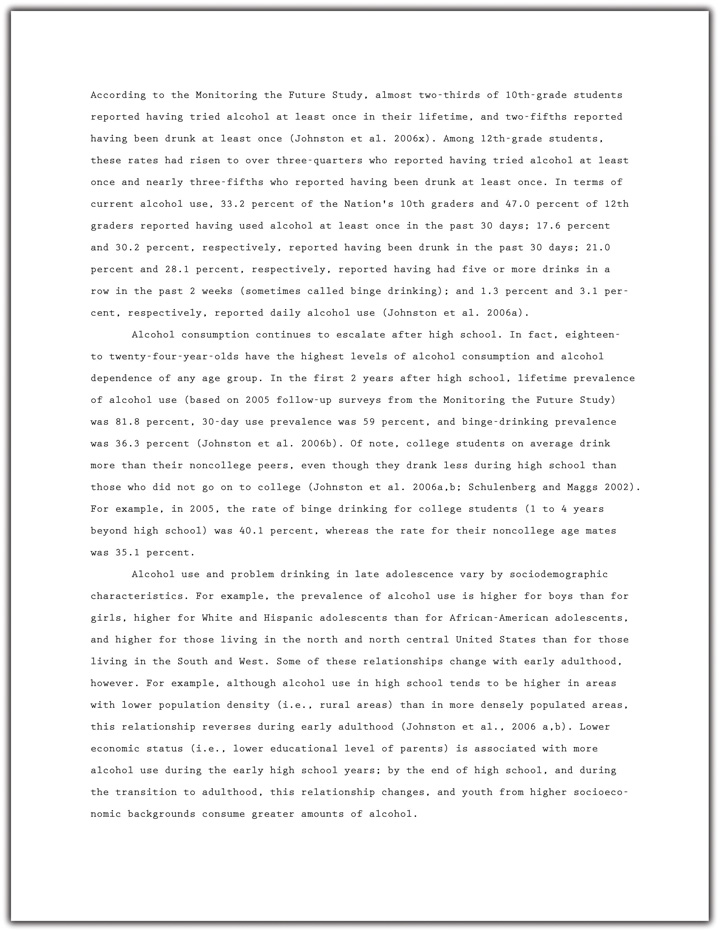
A summary of the report should present all the main points and supporting details in brief. Read the following summary of the report written by a student:
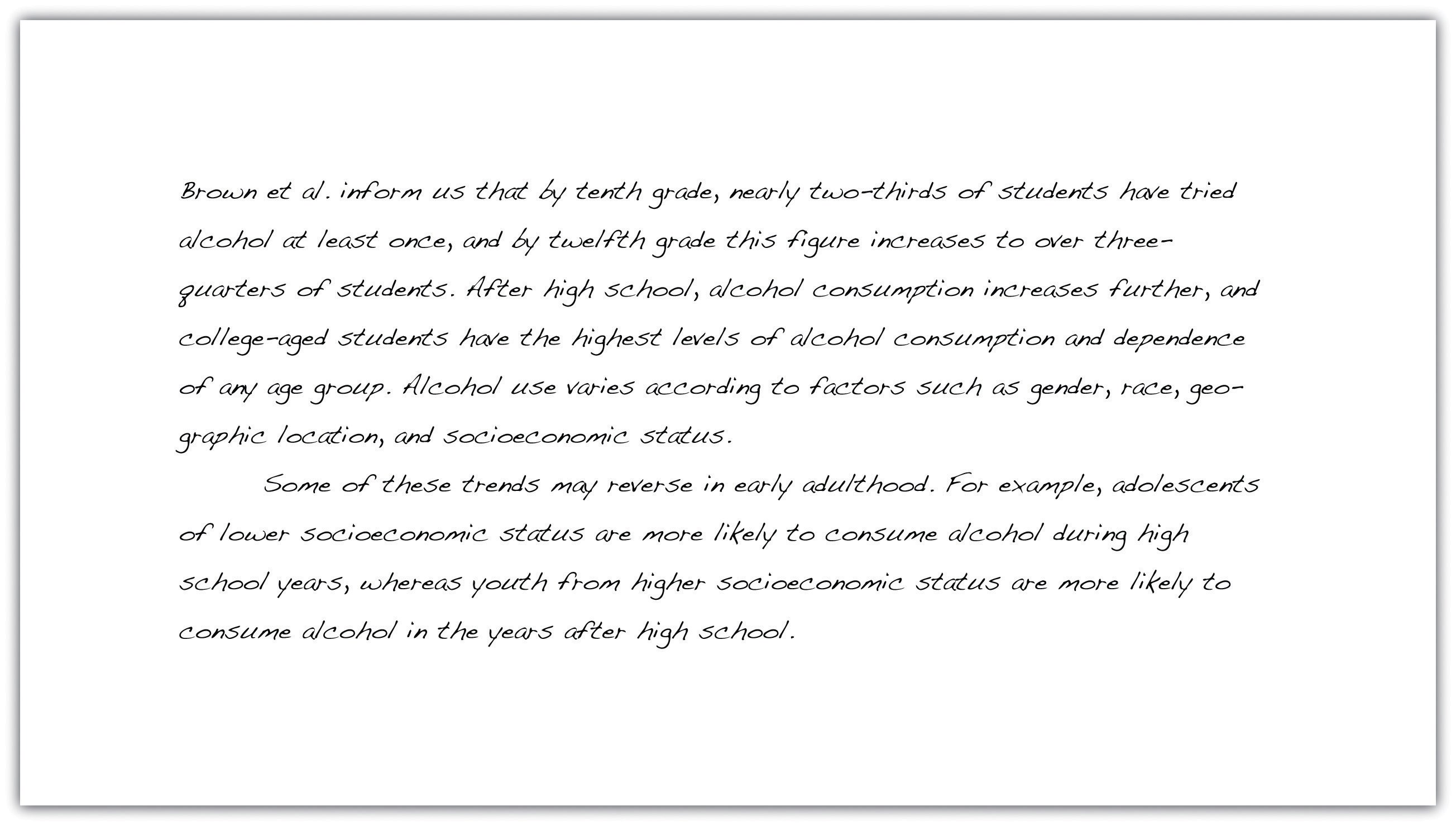
Notice how the summary retains the key points made by the writers of the original report but omits most of the statistical data. Summaries need not contain all the specific facts and figures in the original document; they provide only an overview of the essential information.
Analysis Paragraphs
An analysis separates complex materials in their different parts and studies how the parts relate to one another. The analysis of simple table salt, for example, would require a deconstruction of its parts—the elements sodium (Na) and chloride (Cl). Then, scientists would study how the two elements interact to create the compound NaCl, or sodium chloride, which is also called simple table salt.
Analysis is not limited to the sciences, of course. An analysis paragraph in academic writing fulfills the same purpose. Instead of deconstructing compounds, academic analysis paragraphs typically deconstruct documents. An analysis takes apart a primary source (an essay, a book, an article, etc.) point by point. It communicates the main points of the document by examining individual points and identifying how the points relate to one another.
Take a look at a student’s analysis of the journal report.
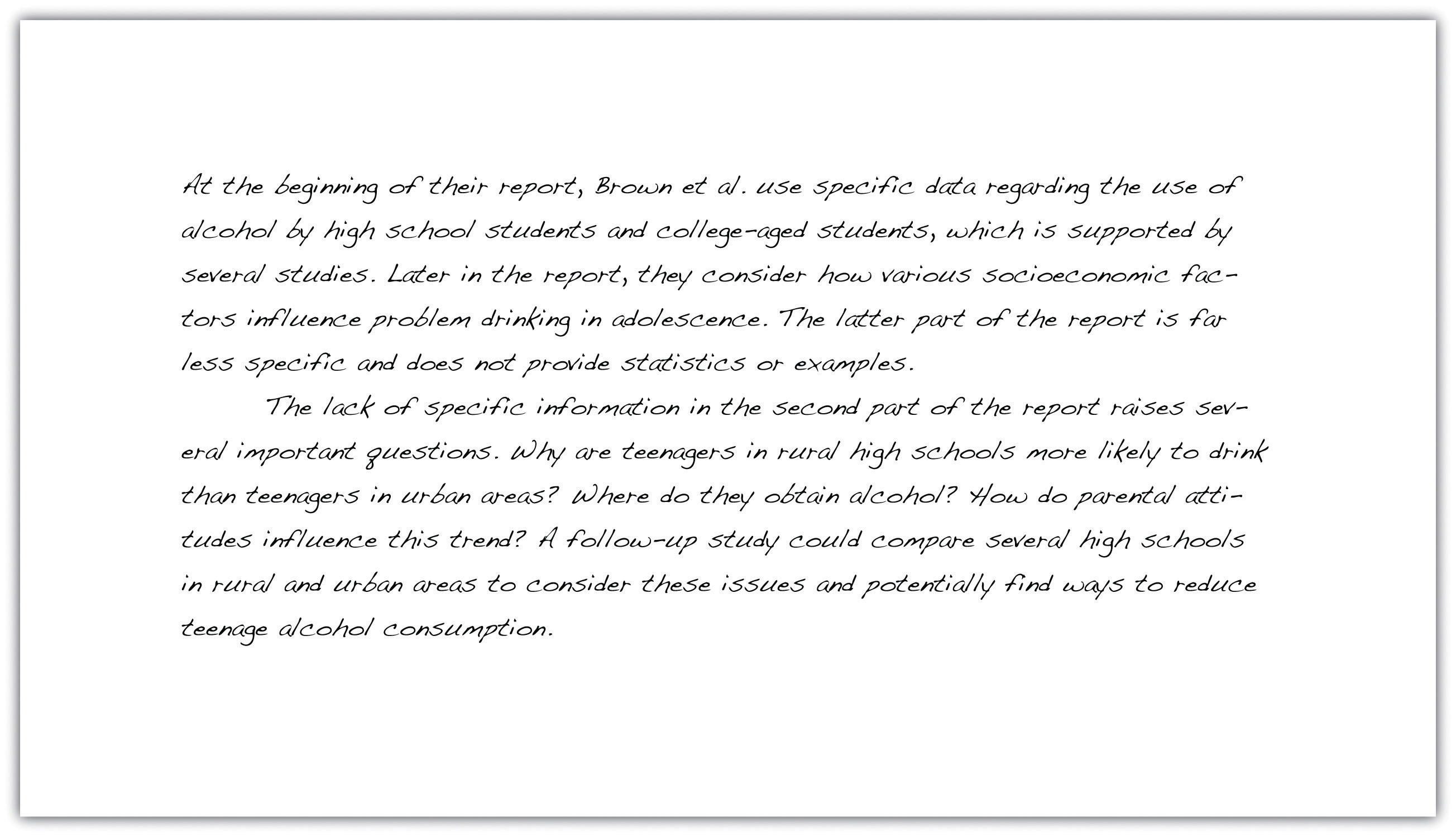
Notice how the analysis does not simply repeat information from the original report, but considers how the points within the report relate to one another. By doing this, the student uncovers a discrepancy between the points that are backed up by statistics and those that require additional information. Analyzing a document involves a close examination of each of the individual parts and how they work together.
Synthesis Paragraphs
A synthesis combines two or more items to create an entirely new item. Consider the electronic musical instrument aptly named the synthesizer. It looks like a simple keyboard but displays a dashboard of switches, buttons, and levers. With the flip of a few switches, a musician may combine the distinct sounds of a piano, a flute, or a guitar—or any other combination of instruments—to create a new sound. The purpose of the synthesizer is to blend together the notes from individual instruments to form new, unique notes.
The purpose of an academic synthesis is to blend individual documents into a new document. An academic synthesis paragraph considers the main points from one or more pieces of writing and links the main points together to create a new point, one not replicated in either document.
Take a look at a student’s synthesis of several sources about underage drinking.
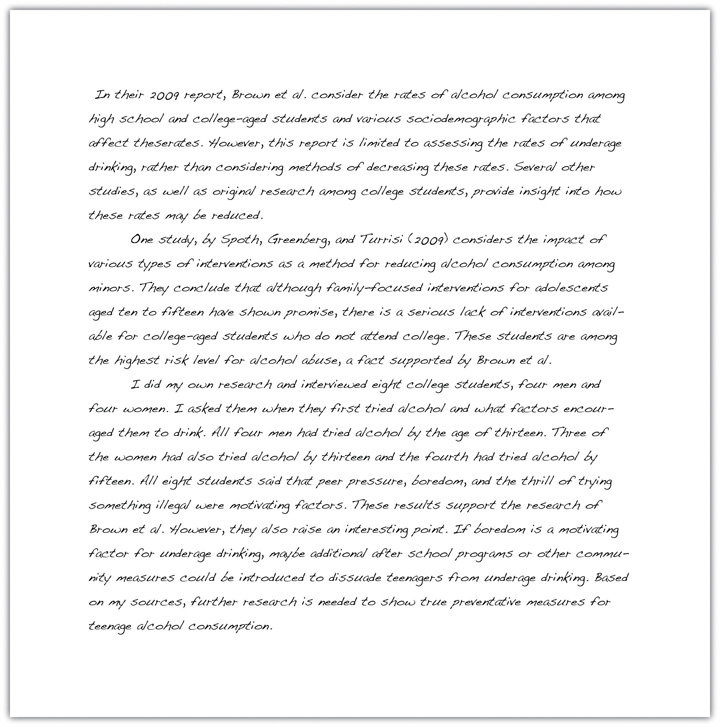
Notice how the synthesis paragraphs consider each source and use information from each to create a new thesis. A good synthesis does not repeat information; the writer uses a variety of sources to create a new idea.
Evaluation Paragraphs
An evaluation judges the value of something and determines its worth. Evaluations in everyday experiences are often not only dictated by set standards but also influenced by opinion and prior knowledge. For example, at work, a supervisor may complete an employee evaluation by judging his subordinate’s performance based on the company’s goals. If the company focuses on improving communication, the supervisor will rate the employee’s customer service according to a standard scale. However, the evaluation still depends on the supervisor’s opinion and prior experience with the employee. The purpose of the evaluation is to determine how well the employee performs at his or her job.
An academic evaluation communicates your opinion, and its justifications, about a document or a topic of discussion. Evaluations are influenced by your reading of the document, your prior knowledge, and your prior experience with the topic or issue. Because an evaluation incorporates your point of view and reasons for your point of view, it typically requires more critical thinking and a combination of summary, analysis, and synthesis skills. Thus evaluation paragraphs often follow summary, analysis, and synthesis paragraphs. Read a student’s evaluation paragraph.
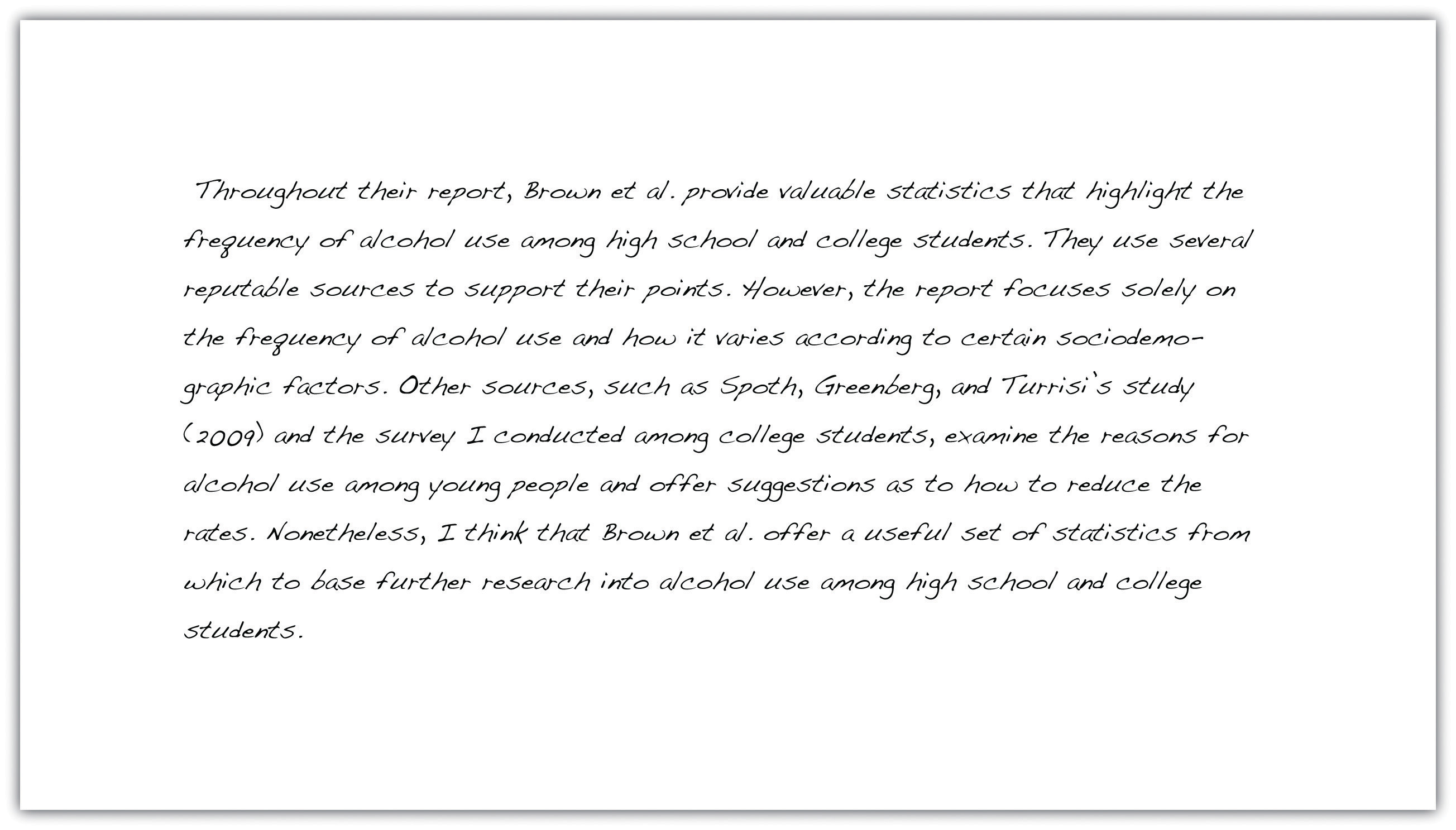
Notice how the paragraph incorporates the student’s personal judgment within the evaluation. Evaluating a document requires prior knowledge that is often based on additional research.
When reviewing directions for assignments, look for the verbs summarize , analyze , synthesize , or evaluate . Instructors often use these words to clearly indicate the assignment’s purpose. These words will cue you on how to complete the assignment because you will know its exact purpose.
Read the following paragraphs about four films and then identify the purpose of each paragraph.
- This film could easily have been cut down to less than two hours. By the final scene, I noticed that most of my fellow moviegoers were snoozing in their seats and were barely paying attention to what was happening on screen. Although the director sticks diligently to the book, he tries too hard to cram in all the action, which is just too ambitious for such a detail-oriented story. If you want my advice, read the book and give the movie a miss.
- During the opening scene, we learn that the character Laura is adopted and that she has spent the past three years desperately trying to track down her real parents. Having exhausted all the usual options—adoption agencies, online searches, family trees, and so on—she is on the verge of giving up when she meets a stranger on a bus. The chance encounter leads to a complicated chain of events that ultimately result in Laura getting her lifelong wish. But is it really what she wants? Throughout the rest of the film, Laura discovers that sometimes the past is best left where it belongs.
- To create the feeling of being gripped in a vice, the director, May Lee, uses a variety of elements to gradually increase the tension. The creepy, haunting melody that subtly enhances the earlier scenes becomes ever more insistent, rising to a disturbing crescendo toward the end of the movie. The desperation of the actors, combined with the claustrophobic atmosphere and tight camera angles create a realistic firestorm, from which there is little hope of escape. Walking out of the theater at the end feels like staggering out of a Roman dungeon.
- The scene in which Campbell and his fellow prisoners assist the guards in shutting down the riot immediately strikes the viewer as unrealistic. Based on the recent reports on prison riots in both Detroit and California, it seems highly unlikely that a posse of hardened criminals will intentionally help their captors at the risk of inciting future revenge from other inmates. Instead, both news reports and psychological studies indicate that prisoners who do not actively participate in a riot will go back to their cells and avoid conflict altogether. Examples of this lack of attention to detail occur throughout the film, making it almost unbearable to watch.
Collaboration
Share with a classmate and compare your answers.
Writing at Work
Thinking about the purpose of writing a report in the workplace can help focus and structure the document. A summary should provide colleagues with a factual overview of your findings without going into too much specific detail. In contrast, an evaluation should include your personal opinion, along with supporting evidence, research, or examples to back it up. Listen for words such as summarize , analyze , synthesize , or evaluate when your boss asks you to complete a report to help determine a purpose for writing.
Consider the essay most recently assigned to you. Identify the most effective academic purpose for the assignment.
My assignment: ____________________________________________
My purpose: ____________________________________________
Identifying the Audience
Imagine you must give a presentation to a group of executives in an office. Weeks before the big day, you spend time creating and rehearsing the presentation. You must make important, careful decisions not only about the content but also about your delivery. Will the presentation require technology to project figures and charts? Should the presentation define important words, or will the executives already know the terms? Should you wear your suit and dress shirt? The answers to these questions will help you develop an appropriate relationship with your audience, making them more receptive to your message.
Now imagine you must explain the same business concepts from your presentation to a group of high school students. Those important questions you previously answered may now require different answers. The figures and charts may be too sophisticated, and the terms will certainly require definitions. You may even reconsider your outfit and sport a more casual look. Because the audience has shifted, your presentation and delivery will shift as well to create a new relationship with the new audience.
In these two situations, the audience—the individuals who will watch and listen to the presentation—plays a role in the development of presentation. As you prepare the presentation, you visualize the audience to anticipate their expectations and reactions. What you imagine affects the information you choose to present and how you will present it. Then, during the presentation, you meet the audience in person and discover immediately how well you perform.
Although the audience for writing assignments—your readers—may not appear in person, they play an equally vital role. Even in everyday writing activities, you identify your readers’ characteristics, interests, and expectations before making decisions about what you write. In fact, thinking about audience has become so common that you may not even detect the audience-driven decisions.
For example, you update your status on a social networking site with the awareness of who will digitally follow the post. If you want to brag about a good grade, you may write the post to please family members. If you want to describe a funny moment, you may write with your friends’ senses of humor in mind. Even at work, you send e-mails with an awareness of an unintended receiver who could intercept the message.
In other words, being aware of “invisible” readers is a skill you most likely already possess and one you rely on every day. Consider the following paragraphs. Which one would the author send to her parents? Which one would she send to her best friend?
Last Saturday, I volunteered at a local hospital. The visit was fun and rewarding. I even learned how to do cardiopulmonary resuscitation, or CPR. Unfortunately, I think caught a cold from one of the patients. This week, I will rest in bed and drink plenty of clear fluids. I hope I am well by next Saturday to volunteer again.
OMG! You won’t believe this! My advisor forced me to do my community service hours at this hospital all weekend! We learned CPR but we did it on dummies, not even real peeps. And some kid sneezed on me and got me sick! I was so bored and sniffling all weekend; I hope I don’t have to go back next week. I def do NOT want to miss the basketball tournament!
Most likely, you matched each paragraph to its intended audience with little hesitation. Because each paragraph reveals the author’s relationship with her intended readers, you can identify the audience fairly quickly. When writing your own paragraphs, you must engage with your audience to build an appropriate relationship given your subject. Imagining your readers during each stage of the writing process will help you make decisions about your writing. Ultimately, the people you visualize will affect what and how you write.
While giving a speech, you may articulate an inspiring or critical message, but if you left your hair a mess and laced up mismatched shoes, your audience would not take you seriously. They may be too distracted by your appearance to listen to your words.
Similarly, grammar and sentence structure serve as the appearance of a piece of writing. Polishing your work using correct grammar will impress your readers and allow them to focus on what you have to say.
Because focusing on audience will enhance your writing, your process, and your finished product, you must consider the specific traits of your audience members. Use your imagination to anticipate the readers’ demographics, education, prior knowledge, and expectations.
- Demographics. These measure important data about a group of people, such as their age range, their ethnicity, their religious beliefs, or their gender. Certain topics and assignments will require these kinds of considerations about your audience. For other topics and assignments, these measurements may not influence your writing in the end. Regardless, it is important to consider demographics when you begin to think about your purpose for writing.
- Education. Education considers the audience’s level of schooling. If audience members have earned a doctorate degree, for example, you may need to elevate your style and use more formal language. Or, if audience members are still in college, you could write in a more relaxed style. An audience member’s major or emphasis may also dictate your writing.
- Prior knowledge. This refers to what the audience already knows about your topic. If your readers have studied certain topics, they may already know some terms and concepts related to the topic. You may decide whether to define terms and explain concepts based on your audience’s prior knowledge. Although you cannot peer inside the brains of your readers to discover their knowledge, you can make reasonable assumptions. For instance, a nursing major would presumably know more about health-related topics than a business major would.
- Expectations. These indicate what readers will look for while reading your assignment. Readers may expect consistencies in the assignment’s appearance, such as correct grammar and traditional formatting like double-spaced lines and legible font. Readers may also have content-based expectations given the assignment’s purpose and organization. In an essay titled “The Economics of Enlightenment: The Effects of Rising Tuition,” for example, audience members may expect to read about the economic repercussions of college tuition costs.
On your own sheet of paper, generate a list of characteristics under each category for each audience. This list will help you later when you read about tone and content.
1. Your classmates
- Demographics ____________________________________________
- Education ____________________________________________
- Prior knowledge ____________________________________________
- Expectations ____________________________________________
2. Your instructor
3. The head of your academic department
4. Now think about your next writing assignment. Identify the purpose (you may use the same purpose listed in Note 6.12 “Exercise 2” ), and then identify the audience. Create a list of characteristics under each category.
My audience: ____________________________________________
Please share with a classmate and compare your answers.
Keep in mind that as your topic shifts in the writing process, your audience may also shift. For more information about the writing process, see Chapter 8 “The Writing Process: How Do I Begin?” .
Also, remember that decisions about style depend on audience, purpose, and content. Identifying your audience’s demographics, education, prior knowledge, and expectations will affect how you write, but purpose and content play an equally important role. The next subsection covers how to select an appropriate tone to match the audience and purpose.
Selecting an Appropriate Tone
Tone identifies a speaker’s attitude toward a subject or another person. You may pick up a person’s tone of voice fairly easily in conversation. A friend who tells you about her weekend may speak excitedly about a fun skiing trip. An instructor who means business may speak in a low, slow voice to emphasize her serious mood. Or, a coworker who needs to let off some steam after a long meeting may crack a sarcastic joke.
Just as speakers transmit emotion through voice, writers can transmit through writing a range of attitudes, from excited and humorous to somber and critical. These emotions create connections among the audience, the author, and the subject, ultimately building a relationship between the audience and the text. To stimulate these connections, writers intimate their attitudes and feelings with useful devices, such as sentence structure, word choice, punctuation, and formal or informal language. Keep in mind that the writer’s attitude should always appropriately match the audience and the purpose.
Read the following paragraph and consider the writer’s tone. How would you describe the writer’s attitude toward wildlife conservation?
Many species of plants and animals are disappearing right before our eyes. If we don’t act fast, it might be too late to save them. Human activities, including pollution, deforestation, hunting, and overpopulation, are devastating the natural environment. Without our help, many species will not survive long enough for our children to see them in the wild. Take the tiger, for example. Today, tigers occupy just 7 percent of their historical range, and many local populations are already extinct. Hunted for their beautiful pelt and other body parts, the tiger population has plummeted from one hundred thousand in 1920 to just a few thousand. Contact your local wildlife conservation society today to find out how you can stop this terrible destruction.
Think about the assignment and purpose you selected in Note 6.12 “Exercise 2” , and the audience you selected in Note 6.16 “Exercise 3” . Now, identify the tone you would use in the assignment.
My tone: ____________________________________________
Choosing Appropriate, Interesting Content
Content refers to all the written substance in a document. After selecting an audience and a purpose, you must choose what information will make it to the page. Content may consist of examples, statistics, facts, anecdotes, testimonies, and observations, but no matter the type, the information must be appropriate and interesting for the audience and purpose. An essay written for third graders that summarizes the legislative process, for example, would have to contain succinct and simple content.
Content is also shaped by tone. When the tone matches the content, the audience will be more engaged, and you will build a stronger relationship with your readers. Consider that audience of third graders. You would choose simple content that the audience will easily understand, and you would express that content through an enthusiastic tone. The same considerations apply to all audiences and purposes.
Match the content in the box to the appropriate audience and purpose. On your own sheet of paper, write the correct letter next to the number.
- Whereas economist Holmes contends that the financial crisis is far from over, the presidential advisor Jones points out that it is vital to catch the first wave of opportunity to increase market share. We can use elements of both experts’ visions. Let me explain how.
- In 2000, foreign money flowed into the United States, contributing to easy credit conditions. People bought larger houses than they could afford, eventually defaulting on their loans as interest rates rose.
- The Emergency Economic Stabilization Act, known by most of us as the humungous government bailout, caused mixed reactions. Although supported by many political leaders, the statute provoked outrage among grassroots groups. In their opinion, the government was actually rewarding banks for their appalling behavior.
Audience: An instructor
Purpose: To analyze the reasons behind the 2007 financial crisis
Content: ____________________________________________
Audience: Classmates
Purpose: To summarize the effects of the $700 billion government bailout
Audience: An employer
Purpose: To synthesize two articles on preparing businesses for economic recovery
Using the assignment, purpose, audience, and tone from Note 6.18 “Exercise 4” , generate a list of content ideas. Remember that content consists of examples, statistics, facts, anecdotes, testimonies, and observations.
My content ideas: ____________________________________________
Key Takeaways
- Paragraphs separate ideas into logical, manageable chunks of information.
- The content of each paragraph and document is shaped by purpose, audience, and tone.
- The four common academic purposes are to summarize, to analyze, to synthesize, and to evaluate.
- Identifying the audience’s demographics, education, prior knowledge, and expectations will affect how and what you write.
- Devices such as sentence structure, word choice, punctuation, and formal or informal language communicate tone and create a relationship between the writer and his or her audience.
- Content may consist of examples, statistics, facts, anecdotes, testimonies, and observations. All content must be appropriate and interesting for the audience, purpose and tone.
Writing for Success Copyright © 2015 by University of Minnesota is licensed under a Creative Commons Attribution-NonCommercial-ShareAlike 4.0 International License , except where otherwise noted.
Thesis and Purpose Statements
Use the guidelines below to learn the differences between thesis and purpose statements.
In the first stages of writing, thesis or purpose statements are usually rough or ill-formed and are useful primarily as planning tools.
A thesis statement or purpose statement will emerge as you think and write about a topic. The statement can be restricted or clarified and eventually worked into an introduction.
As you revise your paper, try to phrase your thesis or purpose statement in a precise way so that it matches the content and organization of your paper.
Thesis statements
A thesis statement is a sentence that makes an assertion about a topic and predicts how the topic will be developed. It does not simply announce a topic: it says something about the topic.
Good: X has made a significant impact on the teenage population due to its . . . Bad: In this paper, I will discuss X.
A thesis statement makes a promise to the reader about the scope, purpose, and direction of the paper. It summarizes the conclusions that the writer has reached about the topic.
A thesis statement is generally located near the end of the introduction. Sometimes in a long paper, the thesis will be expressed in several sentences or an entire paragraph.
A thesis statement is focused and specific enough to be proven within the boundaries of the paper. Key words (nouns and verbs) should be specific, accurate, and indicative of the range of research, thrust of the argument or analysis, and the organization of supporting information.
Purpose statements
A purpose statement announces the purpose, scope, and direction of the paper. It tells the reader what to expect in a paper and what the specific focus will be.
Common beginnings include:
“This paper examines . . .,” “The aim of this paper is to . . .,” and “The purpose of this essay is to . . .”
A purpose statement makes a promise to the reader about the development of the argument but does not preview the particular conclusions that the writer has drawn.
A purpose statement usually appears toward the end of the introduction. The purpose statement may be expressed in several sentences or even an entire paragraph.
A purpose statement is specific enough to satisfy the requirements of the assignment. Purpose statements are common in research papers in some academic disciplines, while in other disciplines they are considered too blunt or direct. If you are unsure about using a purpose statement, ask your instructor.
This paper will examine the ecological destruction of the Sahel preceding the drought and the causes of this disintegration of the land. The focus will be on the economic, political, and social relationships which brought about the environmental problems in the Sahel.
Sample purpose and thesis statements
The following example combines a purpose statement and a thesis statement (bold).
The goal of this paper is to examine the effects of Chile’s agrarian reform on the lives of rural peasants. The nature of the topic dictates the use of both a chronological and a comparative analysis of peasant lives at various points during the reform period. . . The Chilean reform example provides evidence that land distribution is an essential component of both the improvement of peasant conditions and the development of a democratic society. More extensive and enduring reforms would likely have allowed Chile the opportunity to further expand these horizons.
For more tips about writing thesis statements, take a look at our new handout on Developing a Thesis Statement.

Writing Process and Structure
This is an accordion element with a series of buttons that open and close related content panels.
Getting Started with Your Paper
Interpreting Writing Assignments from Your Courses
Generating Ideas for Your Paper
Creating an Argument
Thesis vs. Purpose Statements
Developing a Thesis Statement
Architecture of Arguments
Working with Sources
Quoting and Paraphrasing Sources
Using Literary Quotations
Citing Sources in Your Paper
Drafting Your Paper
Introductions
Paragraphing
Developing Strategic Transitions
Conclusions
Revising Your Paper
Peer Reviews
Reverse Outlines
Revising an Argumentative Paper
Revision Strategies for Longer Projects
Finishing Your Paper
Twelve Common Errors: An Editing Checklist
How to Proofread your Paper
Writing Collaboratively
Collaborative and Group Writing

A Summary and Analysis of George Orwell’s ‘Why I Write’
By Dr Oliver Tearle (Loughborough University)
‘Why I Write’ is an essay by George Orwell, published in 1946 after the publication of his novella Animal Farm and before he wrote his final novel, Nineteen Eighty-Four . The essay is an insightful piece of memoir about Orwell’s early years and how he developed as a writer, from harbouring ambitions to write self-consciously literary works to developing, in the 1930s, into the author of sharp political commentary in both fiction and non-fiction.
You can read ‘Why I Write’ here before proceeding to our summary and analysis of Orwell’s essay below.
‘Why I Write’: summary
Orwell begins by observing that he knew he should be a writer from a very young age. Although in early adulthood he tried to ‘abandon’ the idea, he knew it was his true calling and that he would eventually ‘settle down and write books’.
He tells us that he was a lonely child who would make up stories and hold conversations with imaginary people, and that his own desire to write is linked to this childhood loneliness. During the First World War, when Orwell was still a child, he had two poems published in the local newspaper, and that was the beginning of his publishing career.
In his youth, he continued to think like a writer, making up a ‘continuous “story” about myself’, but never writing it down. When he was in his twenties, he had ambitions of writing ‘enormous naturalistic novels with unhappy endings, full of detailed descriptions and arresting similes, and also full of purple passages in which words were used partly for the sake of their sound’. Orwell calls his first novel, Burmese Days (1934), this kind of book.
Orwell then outlines what he sees as four chief motives for anyone becoming a writer: 1) egoism; 2) aesthetic enthusiasm; 3) historical impulse; and 4) political purpose.
Egoism is the desire to be thought clever, be talked about when alive, and remembered after death. Aesthetic enthusiasm is the perception of beauty in the world around the writer, as well as the beauty of language. The historical impulse is a desire to see things as they are and present the facts to readers. Political purpose is the urge to change people’s views of the kind of society they want to live in.
This last one is a matter of degree, because Orwell argues that every writer adopts some kind of political position: ‘Once again, no book is genuinely free from political bias. The opinion that art should have nothing to do with politics is itself a political attitude.’
Perhaps surprisingly given he is principally known for ‘political’ writing, Orwell confides that by nature he is someone for whom the first three motives would usually outweigh the fourth. But when the Spanish Civil War broke out in 1936, Orwell knew where he stood. As he famously declares: ‘Every line of serious work that I have written since 1936 has been written, directly or indirectly, against totalitarianism and for democratic socialism, as I understand it.’
Orwell concludes ‘Why I Write’ by stating that in the decade since 1936 he has tried to turn political writing ‘into an art’. Although he acknowledges that his impulse has not been entirely public-spirited but just as egoistic and ‘vain’ as it is in most writers, he knows that ‘one can write nothing readable unless one constantly struggles to efface one’s own personality.’ The political scene has helped Orwell to sharpen his own writing.
‘Why I Write’: analysis
Orwell’s essay is of interest as a piece of autobiography, but Orwell extrapolates from his own personal background and literary trajectory to make more universal statements about good writing, and the reasons why all writers choose to write for a living (if they’re indeed lucky enough to do it for a living: in his ‘ Confessions of a Book Reviewer ’, also from 1946, he brilliantly outlines the absurd and stressful existence of struggling writers surviving on hackwork for newspapers and magazines, just to pay that month’s rent).
One of the key insights in ‘Why I Write’ is the link Orwell makes between his own efforts to become a successful writer and the broader political scene in Europe (and beyond) at the time. The Spanish Civil War, and the rise of Nazism, fascism, and Stalinism, all gave him a clear sense of what he should write about. As he puts it, all of his serious work written since has been ‘ against totalitarianism and for democratic socialism’.
We find this even in an essay like ‘ Politics vs. Literature: An Examination of Gulliver’s Travels ’ (which, along with his analysis of Dickens’s art, shows what a fine and sensitive literary critic Orwell was), another 1946 essay, in which Orwell argues that in Book IV of Gulliver’s Travels , Jonathan Swift depicts what we would now call a totalitarian society. But because Gulliver (and, presumably, by extension, Swift himself) approves of the Houyhnhnms’ society, Swift admires the idea of a totalitarian state in which dissident opinion is unacceptable.
The point is that when he lacked a clear motivation for writing fiction, he churned out ‘lifeless’ work (much of which, such as his novel A Clergyman’s Daughter , a kind of Joycean work in many ways, he later disowned, calling it ‘tripe’).
But once he realised what his subject-matter should be, this new-found ‘political purpose’ sharpened his prose. In a sense, the fourth of Orwell’s listed motives brought the other three into a new perspective. His clearest and most detailed account of what constitutes good political writing is his essay ‘ Politics and the English Language ’ (also from 1946), which we have analysed here .
In 1976, Joan Didion wrote her own essay called ‘ Why I Write ’, in which she acknowledged that she had taken her title from George Orwell. She also drew attention to the triple-assonance in Orwell’s title, the long I sounds of ‘Why I Write’.
Even Orwell’s title is itself an example of the clear-minded simplicity which he identifies as the chief feature of good writing at the end of ‘Why I Write’: ‘Good prose is like a window pane.’ But as so often with Orwell’s work, he is not just writing about himself, but drawing attention to far more widespread truths about what motivates an author to devote their lives to writing.
Discover more from Interesting Literature
Subscribe to get the latest posts to your email.
Type your email…
2 thoughts on “A Summary and Analysis of George Orwell’s ‘Why I Write’”
Most interesting, wonderful text!
- Pingback: A Summary and Analysis of George Orwell’s Nineteen Eighty-Four – Interesting Literature
Leave a Reply Cancel reply
Subscribe now to keep reading and get access to the full archive.
Continue reading

In order to continue enjoying our site, we ask that you confirm your identity as a human. Thank you very much for your cooperation.

What Is An Author’s Purpose—Top 3 Purposes Of The Best Authors
- May 7, 2022
What is an author’s purpose? Why do writers write? What are they trying to achieve in their writing process? And how do they write in ways that help them achieve their goals? In this article, we will define what an author’s purpose is, the different types of writing, and how to identify the author’s purpose in fiction and nonfiction writing alike.
Author’s purpose definition
The author’s purpose is the reason behind their work. It is the ‘ why ‘ that motivated the writer to start writing in the first place. Any work you read, whether it is a magazine, a novel, an essay, or a blog, has some purpose. There is a reason it was written in the first place, which is the author’s purpose. A single piece of work may involve elements of persuasion, information, and entertainment but will typically have one main purpose. For example, blogs and landing pages typically drive readers to take action. They are informative and can even be entertaining, but their main purpose is to persuade.
Novels are informative regarding the characters , setting, and sociocultural background, but they are not meant to persuade—they are written for entertainment purposes. Essays are primarily informative but may also be written with the intent to persuade. They may even be entertaining if the author uses humor or interesting anecdotes, but the author’s primary purpose in an essay is to inform the reader about the topic.

What is an author’s purpose?
There are five general authors’ purposes. In any book, fiction or nonfiction , children’s fiction or adult, classic or modern, the author writes with a purpose. An agreed-upon relationship between author and reader begins when the reader decides to read the book. In that relationship, the author is at any one point doing one of five things, fulfilling one of the five purposes.
The top three author’s purposes are:
The purpose of pe rsuasive writing is to persuade or convince the reader to follow a particular point of view. The author wants the reader to buy into their viewpoint by using facts and statistics to support their claims. They present the facts in an informative way but add their own opinions too. They might emphasize facts or research that support their point of view. They may also use sentences and phrases that evoke an emotional response from the reader.
When readers’ emotions are targeted, they are more receptive to the message. Consider the emotional targeting easily observed in political writing. Political leaders and speakers, who must hone the craft of persuasion, often rally up a crowd or gather more support for their campaigns by playing on people’s emotions. Fear, for example, is an incredibly powerful emotion that can motivate people to take almost immediate action when triggered.
Informative writing is a matter of fact and free from the author’s opinion or bias. It is written with the intent to educate the reader about a particular subject. This type of writing often heavily features bulleted or numbered points to clarify the points made in a section.
For example, an author of a school textbook is to inform students about the topic. As such, they will introduce the topic with real-world examples, facts, and statistics and make sure to cover opposing points. Unlike persuasive writing, the writer has no personal or political agenda—their purpose is pure. They write to inform the reader, to enlighten them on a subject. Many informative texts feature sections and paragraphs followed by bullet points to summarize the information.
Works of fiction are written with the intent to entertain the reader. A fiction writer’s purpose is to immerse the reader in the story’s world through a vivid setting , rich characters, and an engaging plot . Some nonfiction writing also aims to entertain the reader. Books full of facts and statistics may be exciting but will not engage a reader unless the content is also entertaining. For example, Yuval’s Sapiens is nonfiction and informative but also contains elements of humor and facts presented in such a way that makes the reader more curious than before.

How to identify the author’s purpose
How do you identify the author’s purpose when reading a book? A good starting point is to ask yourself some simple questions. By enquiring into the text and identifying elements of persuasion, attempts to inform, or literary devices such as humor or hyperbole to entertain, you can approach the text with a prepared mind. Why is that important? It prevents you from being led to believe something without even being aware that you are being persuaded. It helps you think more critically about whatever it is you find yourself reading.
“It is the mark of an educated mind to be able to entertain a thought without accepting it.” Aristotle
How to identify persuasive writing
You can identify persuasive writing by the tone and type of language used. Is the author trying to make me believe something? Is the author trying to convince me or persuade me to take a particular standpoint on the topic? Does the author back up their claims with supporting evidence? Do they offer several viewpoints on the same topic or stick to just one or two? Do they attack other viewpoints? Do they use evocative imagery, hyperbole, or photographs to emphasize their point? Do they play on my emotions? Do they make me want to take action?
An example of persuasive writing
We know that persuasive writing tries to convince the reader to believe a particular viewpoint or take a particular course of action. Check out the following example to see how an author might persuade a reader.
“Mental health issues among adolescents are on the rise. According to the CDC, more than 1 in 3 high school students experienced persistent feelings of sadness or hopelessness in 2019. In the same year, almost 1 in 6 American high school students experience suicidal tendencies, a 44 percent increase since 2009. Given the drastic rise in mental health issues among our vulnerable youth, it’s more important than ever to fund school-based mental health resources such as therapy and counseling. We must show support to our future leaders by extending a hand and offering a compassionate and supportive ear. “
How do you feel after reading this piece? Do you agree with the author? Do you want to do something to help these vulnerable high school students? Do you feel like you learned something? What makes the above text persuasive? The author makes a statement, then backs it up with supporting evidence. He then adds some emotional input by highlighting how the youth are vulnerable. Finally, he uses the modal verb ‘must’ to persuade the reader to follow his cause.
How to identify informative writing
Facts and statistics are found in both persuasive and informative writing. So, how do you tell the difference between the two? Are these facts presented objectively, or is there an opinion included? Does the author use bulleted or numbered points? Does the author ask clarifying questions or offer a summary at the end of each section? Have I learned something new after reading this?
An example of informative writing
The following is an excerpt from an informative essay written by Mallory Beinborn, entitled ‘Four Hoofed Therapy Machines,’ published in Wink: An Online Journal. Notice how the author presents the information:
Autism is the third or fourth most common developmental disability, and according to NARHA Strides Magazine, it “occurs in approximately 5-15 per 10,000 births” (Brown 1). Children and adults with Autism have a dysfunctional sensory system. This means, “One or more senses are either over-or under-reactive to stimulation” (Hatch-Rasmussen 1).
The author uses facts and statistics, but unlike the persuasive author, the informative author does not try to use those facts and statistics to prove the validity of their opinion. Instead, they present the information to enlighten and educate the reader. Note that the above example is only an introduction. The text goes much further in achieving its goal of informing the reader about autism and its challenges.

How to identify entertaining writing
When authors write for entertainment purposes, they employ a variety of styles, devices, and techniques to immerse the reader in the world of the story, whether it is a detective story , science fiction, high fantasy , or romance .
Does the author write about a fictional setting with fictional characters and a developing plot ? Are there action-packed, hyperreal scenarios? Is there a build of tension, a climax, and a resolution?
Note that both persuasive and informative writing can also be entertaining. As mentioned, a writer may use a funny or otherwise emotionally evocative anecdote. This may well connect to penetrating writing, such as deceptive setting, conflict, and current themes. The purpose of their anecdote, though entertaining, is still to persuade.
An example of entertaining writing
“ Nearly ten years had passed since the Dursleys had woken up to find their nephew on the front step, but Privet Drive had hardly changed at all. The sun rose on the same tidy front gardens and lit up the brass number four on the Dursleys’ front door; it crept into their living room, which was almost the same as it had been on the night when Mr. Dursley had seen that fateful news report about the owls. Only the photographs on the mantelpiece showed how much time had passed. “ J.K Rowling’s Harry Potter and The Philosopher’s Stone
No attempts at persuasion. Fiction writer Rowling’s Harry Potter series is pure entertainment. Rowling uses descriptive writing to describe how the sun rose in the same garden and ‘ lit up the brass number four ,’ but since this is a fictional story, she cannot be said to educate the reader. Her description may be called informative since it paints a picture of the scene so that the reader can more deeply immerse themselves in the story. Overall, this is writing for entertainment purposes.
Other than descriptive picture painting passages, entertaining writing often features a sharp dialogue between interesting characters. The relationship between the characters, the plot points, and the setting of a story makes it so entertaining and sets it apart from other types of writing.
Everything you read has a purpose. If there were no purpose, it probably would not have been written. As a reader, it is relatively easy to recognize the author’s purpose, especially having read the outlines and definitions of each type above.
It is important to be able to recognize an author’s purpose. These days we are flooded with information and content, and the unfortunate truth is not all of what we read is there to help us. Some people can skillfully combine facts and statistics and merge them with their own opinion to convince others. There is nothing wrong with that, but it is important for you as a reader to understand that a piece of text wants to convince you. Without knowing a text’s intent, you may take it as purely informative and go about your day with a manipulated point of view.
Similarly, if you need a purely informative piece of writing about a topic, for example, the history of New York City between 1800 and 1900, then knowing about the author’s purpose is key. Perhaps you have to write an essay on the topic. If that text is persuasive, but you do not realize it, you will be sharing opinions that are not your own and believing facts that have been presented persuasively.
Leave a Comment Cancel Reply
Your email address will not be published. Required fields are marked *
Save my name, email, and website in this browser for the next time I comment.
Sign up to our newsletter!
Related articles

120 Motivational Quotes About Writing To Inspire A New Writer Like You

How To Register A Kindle On Amazon To Enjoy Your Ebooks In 4 Easy Ways

How To Market A Self-Published Book And Be Profitable In 9 Easy Ways
If you're seeing this message, it means we're having trouble loading external resources on our website.
If you're behind a web filter, please make sure that the domains *.kastatic.org and *.kasandbox.org are unblocked.
To log in and use all the features of Khan Academy, please enable JavaScript in your browser.
Eighth grade reading skills
Course: eighth grade reading skills > unit 1, identifying the purpose | reading.
- Analyzing an author's purpose | Reading
What's the purpose?
- The purpose of the text is to. . .
- What is the main point of the text?
- Which author's purpose is suggested by the text?
- What is the function of the first sentence of the last paragraph?
- What is the purpose of the second paragraph?
- The author most likely mentions ______ in order to. . .
What kinds of "purposes" are there?
The "big" purpose.
- Is the author trying to inform you about a topic? If the text is full of facts and information, the author's purpose might be to describe or explain something to you.
- Is the author trying to convince you to think or feel a certain way? If the text is trying to convince you to take a certain action or change your mind about something, the author's purpose might be to convince or persuade you.
The "little" purpose
- Is it an introduction or conclusion? In most essays and articles, the purpose of the first paragraph is the same: to introduce the main idea or main argument . And the purpose of the last paragraph is usually to summarize the main idea or main argument , though some conclusions will also add some bigger takeaways or "food for thought".
- Is it reasoning or evidence? Even when a passage is purely informational, authors need to provide evidence or reasoning to support their claims. The purpose of including data, facts, and research in a text is often to support or illustrate a claim .
- Does it agree or disagree with what comes before/after? Just like you have to keep the overall purpose of the passage in mind, you also have to track how an idea relates to what comes before it and what comes after it. Does it disagree with what comes before it? Then its purpose might be to contrast two ideas, or to provide an alternative viewpoint. Does it agree with what came before it? Then its purpose might be to build the argument or to show a similarity between ideas.
Want to join the conversation?
Spring 2025 Semester
Undergraduate courses.
Composition courses that offer many sections (ENGL 101, 201, 277 and 379) are not listed on this schedule unless they are tailored to specific thematic content or particularly appropriate for specific programs and majors.
- 100-200 level
ENGL 201.ST2 Composition II: The Mind/Body Connection
Dr. sharon smith.
In this online section of English 201, students will use research and writing to learn more about problems that are important to them and articulate ways to address those problems. The course will focus specifically on issues related to the body, the mind, and the relationship between them. The topics we will discuss during the course will include the correlation between social media and body image; the psychological effects of self-objectification; and the unique mental and physical challenges faced by college students today, including food insecurity and stress.
English 201 S06 and S11: Composition II with an emphasis in Environmental Writing
S06: MWF at 10–10:50 a.m. in Yeager Hall Addition 231
S11: MWF at 12–12:50 p.m. in Crothers Engineering Hall 217
Gwen Horsley
English 201 will help students develop skills to write effectively for other university courses, careers, and themselves. This course will provide opportunities to further develop research skills, to write vividly, and to share their own stories and ideas. Specifically, in this class, students will (1) focus on the relationships between world environments, land, animals and humankind; (2) read various essays by environmental, conservational, and regional authors; and (3) produce student writings. Students will improve their writing skills by reading essays and applying techniques they witness in others’ work and those learned in class. This class is also a course in logical and creative thought. Students will write about humankind’s place in the world and our influence on the land and animals, places that hold special meaning to them or have influenced their lives, and stories of their own families and their places and passions in the world. Students will practice writing in an informed and persuasive manner, in language that engages and enlivens readers by using vivid verbs and avoiding unnecessary passives, nominalizations, and expletive constructions.
Students will prepare writing assignments based on readings and discussions of essays included in Literature and the Environment and other sources. They will use The St. Martin’s Handbook to review grammar, punctuation, mechanics, and usage as needed.
Required Text: Literature and the Environment: A Reader On Nature and Culture. 2nd ed., edited by Lorraine Anderson, Scott Slovic, and John P. O’Grady.
LING 203.S01 English Grammar
TuTh 12:30-1:45 p.m.
Dr. Nathan Serfling
The South Dakota State University 2023-2024 Undergraduate Catalog describes LING 203 as consisting of “[i]nstruction in the theory and practice of traditional grammar including the study of parts of speech, parsing, and practical problems in usage.”
“Grammar” is a mercurial term, though. Typically, we think of it to mean “correct” sentence structure, and, indeed, that is one of its meanings. But Merriam-Webster reminds us “grammar” also refers to “the principles or rules of an art, science, or technique,” taking it beyond the confines of syntactic structures. Grammar also evolves in practice through application (and social, historical, economic changes, among others). Furthermore, grammar evolves as a concept as scholars and educators in the various fields of English studies debate the definition and nature of grammar, including how well its explicit instruction improves students’ writing. In this course, we will use the differing sensibilities, definitions, and fluctuations regarding grammar to guide our work. We will examine the parts of speech, address syntactic structures and functions, and parse and diagram sentences. We will also explore definitions of and debates about grammar. All of this will occur in units about the rules and structures of grammar; the application of grammar rhetorically and stylistically; and the debates surrounding various aspects of grammar, including, but not limited to, its instruction.
ENGL 210 Introduction to Literature
Jodi andrews.
Readings in fiction, drama and poetry to acquaint students with literature and aesthetic form. Prerequisites: ENGL 101. Notes: Course meets SGR #4 or IGR #3.
ENGL 222 British Literature II
TuTh 9:30-10:45 a.m.
This course serves as a chronological survey of the second half of British literature. Students will read a variety of texts from the Romantic period, the Victorian period, and the twentieth and twenty-first centuries, placing these texts within their historical and literary contexts and identifying the major characteristics of the literary periods and movements that produced them.
ENGL 240.ST1 Juvenile Literature
Randi l. anderson.
A survey of the history of literature written for children and adolescents, and a consideration of the various types of juvenile literature.
ENGL 240.ST1 Juvenile Literature: 5-12 Grade
In English 240 students will develop the skills to interpret and evaluate various genres of literature for juvenile readers. This particular section will focus on various works of literature at approximately the 5th-12th grade level.
Readings for this course include works such as Night, Brown Girl Dreaming, All American Boys, Esperanza Rising, Anne Frank’s Diary: A Graphic Adaptation, Animal Farm, Fahrenheit 451, The Giver, The Hobbit, Little Women, and Lord of the Flies . These readings will be paired with chapters from Reading Children’s Literature: A Critical Introduction to help develop understanding of various genres, themes, and concepts that are both related to juvenile literature, and also present in our readings.
In addition to exploring various genres of writing (poetry, non-fiction, fantasy, historical, non-fiction, graphic novels, etc.) this course will also allow students to engage in a discussion of larger themes present in these works such as censorship, race, rebellion and dissent, power and oppression, gender, knowledge, and the power of language and the written word. Students’ understanding of these works and concepts will be developed through readings, discussion posts, quizzes and exams.
ENGL 240.ST2 Juvenile Literature Elementary-5th Grade
April myrick.
A survey of the history of literature written for children and adolescents, and a consideration of the various genres of juvenile literature. Text selection will focus on the themes of imagination and breaking boundaries.
ENGL 242.S01 American Literature II
TuTh 11 a.m.-12:15 p.m.
Dr. Paul Baggett
This course surveys a range of U.S. literatures from about 1865 to the present, writings that treat the end of slavery and the development of a segregated America, increasingly urbanized and industrialized U.S. landscapes, waves of immigration, and the fulfilled promise of “America” as imperial nation. The class will explore the diversity of identities represented during that time, and the problems/potentials writers imagined in response to the century’s changes—especially literature’s critical power in a time of nation-building. Required texts for the course are The Norton Anthology of American Literature: 1865 to the Present and Toni Morrison’s A Mercy.
WMST 247.S01: Introduction to Women, Gender and Sexuality Studies
As an introduction to Women, Gender and Sexuality studies, this course considers the experiences of women and provides an overview of the history of feminist thought and activism, particularly within the United States. Students will also consider the concepts of gender and sexuality more broadly to encompass a diversity of gender identifications and sexualities and will explore the degree to which mainstream feminism has—and has not—accommodated this diversity. The course will focus in particular on the ways in which gender and sexuality intersect with race, class, ethnicity, and disability. Topics and concepts covered will include: movements for women’s and LGBTQ+ rights; gender, sexuality and the body; intersectionality; rape culture; domestic and gender violence; reproductive rights; Missing and Murdered Indigenous Women (MMIW); and more.
ENGL 283.S01 Introduction to Creative Writing
MWF 1-1:50 p.m.
Prof. Steven Wingate
Students will explore the various forms of creative writing (fiction, nonfiction and poetry) not one at a time in a survey format—as if there were decisive walls of separation between then—but as intensely related genres that share much of their creative DNA. Through close reading and work on personal texts, students will address the decisions that writers in any genre must face on voice, rhetorical position, relationship to audience, etc. Students will produce and revise portfolios of original creative work developed from prompts and research. This course fulfills the same SGR #2 requirements ENGL 201; note that the course will involve creative research projects. Successful completion of ENGL 101 (including by test or dual credit) is a prerequisite.
English 284: Introduction to Criticism
This course introduces students to selected traditions of literary and cultural theory and to some of the key issues that animate discussion among literary scholars today. These include questions about the production of cultural value, about ideology and hegemony, about the patriarchal and colonial bases of Western culture, and about the status of the cultural object, of the cultural critic, and of cultural theory itself.
To address these and other questions, we will survey the history of literary theory and criticism (a history spanning 2500 years) by focusing upon a number of key periods and -isms: Greek and Roman Classicism, The Middle Ages and Renaissance, The Enlightenment, Romanticism, Realism, Formalism, Historicism, Political Criticism (Marxism, Post-Colonialism, Feminism, et al.), and Psychological Criticism. We also will “test” various theories we discuss by examining how well they account for and help us to understand various works of poetry and fiction.
- 300-400 level
ENGL 330.S01 Shakespeare
TuTh 8-9:15 a.m.
Dr. Michael S. Nagy
This course will focus on William Shakespeare’s poetic and dramatic works and on the cultural and social contexts in which he wrote them. In this way, we will gain a greater appreciation of the fact that literature does not exist in a vacuum, for it both reflects and influences contemporary and subsequent cultures. Text: The Riverside Shakespeare: Complete Works. Ed. Evans, G. Blakemore and J. J. M. Tobin. Boston: Houghton Mifflin, 1997.
ENGL 363 Science Fiction
MWF 11-11:50 a.m.
This course explores one of the most significant literary genres of the past century in fiction and in film. We will focus in particular on the relationship between science fiction works and technological and social developments, with considerable attention paid to the role of artificial intelligence in the human imagination. Why does science fiction seem to predict the future? What do readers and writers of the genre hope to find in it? Through readings and viewings of original work, as well as selected criticism in the field, we will address these and other questions. Our reading and viewing selections will include such artists as Ursula K. LeGuin, Octavia Butler, Stanley Kubrick and Phillip K. Dick. Students will also have ample opportunity to introduce the rest of the class to their own favorite science fiction works.
ENGL 383.S01 Creative Writing I
MWF 2-2:50 p.m.
Amber Jensen
Creative Writing I encourages students to strengthen poetry, creative nonfiction, and/or fiction writing skills through sustained focus on creative projects throughout the course (for example, collections of shorter works focused on a particular form/style/theme, longer prose pieces, hybrid works, etc.). Students will engage in small- and large-group writing workshops as well as individual conferences with the instructor throughout the course to develop a portfolio of creative work. The class allows students to explore multiple genres through the processes of writing and revising their own creative texts and through writing workshop, emphasizing the application of craft concepts across genre, but also allows students to choose one genre of emphasis, which they will explore through analysis of self-select texts, which they will use to deepen their understanding of the genre and to contextualize their own creative work.
ENGL 475.S01 Creative Nonfiction
Mondays 3-5:50 p.m.
In this course, students will explore the expansive and exciting genre of creative nonfiction, including a variety of forms such as personal essay, braided essay, flash nonfiction, hermit crab essays, profiles and more. Through rhetorical reading, discussion, and workshop, students will engage published works, their own writing process, and peer work as they expand their understanding of the possibilities presented in this genre and the craft elements that can be used to shape readers’ experience of a text. Students will compile a portfolio of polished work that demonstrates their engagement with course concepts and the writing process.
ENGL 485.S01 Writing Center Tutoring
MW 8:30-9:45 a.m.
Since their beginnings in the 1920s and 30s, writing centers have come to serve numerous functions: as hubs for writing across the curriculum initiatives, sites to develop and deliver workshops, and resource centers for faculty as well as students, among other functions. But the primary function of writing centers has necessarily and rightfully remained the tutoring of student writers. This course will immerse you in that function in two parts. During the first four weeks, you will explore writing center praxis—that is, the dialogic interplay of theory and practice related to writing center work. This part of the course will orient you to writing center history, key theoretical tenets and practical aspects of writing center tutoring. Once we have developed and practiced this foundation, you will begin work in the writing center as a tutor, responsible for assisting a wide variety of student clients with numerous writing tasks. Through this work, you will learn to actively engage with student clients in the revision of a text, respond to different student needs and abilities, work with a variety of writing tasks and rhetorical situations and develop a richer sense of writing as a complex and negotiated social process.
ENGL 492.S01 The Vietnam War in Literature and Film
Tuesdays 3-5:50 p.m.
Dr. Jason McEntee
In 1975, the United States officially included its involvement in the Vietnam War, thus marking 2025 as the 50th anniversary of the conclusion (in name only) of one of the most chaotic, confusing, and complex periods in American history. In this course, we will consider how literature and film attempt to chronicle the Vietnam War and, perhaps more important, its aftermath. I have designed this course for those looking to extend their understanding of literature and film to include the ideas of art, experience, commercial products, and cultural documents. Learning how to interpret literature and movies remains the highest priority of the course, including, for movies, the study of such things as genre, mise-en-scene (camera movement, lighting, etc.), editing, sound and so forth.
We will read Dispatches , A Rumor of War , The Things They Carried , A Piece of My Heart , and Bloods , among others. Some of the movies that we will screen are: Apocalypse Now (the original version), Full Metal Jacket , Platoon , Coming Home , Born on the Fourth of July , Dead Presidents , and Hearts and Minds . Because we must do so, we will also look at some of the more fascinatingly outrageous yet culturally significant fantasies about the war, such as The Green Berets and Rambo: First Blood, Part II .
ENGL 492.S02 Classical Mythology
TuTh 3:30-4:45 p.m.
Drs. Michael S. Nagy and Graham Wrightson
Modern society’s fascination with mythology manifests itself in the continued success of novels, films and television programs about mythological or quasi-mythological characters such as Hercules, the Fisher King, and Gandalf the Grey, all of whom are celebrated for their perseverance or their daring deeds in the face of adversity. This preoccupation with mythological figures necessarily extends back to the cultures which first propagated these myths in early folk tales and poems about such figures as Oðin, King Arthur, Rhiannon, Gilgamesh, and Odysseus, to name just a few. English 492, a reading-intensive course cross-listed with History 492, primarily aims to expose students to the rich tradition of mythological literature written in languages as varied as French, Gaelic, Welsh, Old Icelandic, Greek, and Sumerian; to explore the historical, social, political, religious, and literary contexts in which these works flourished (if indeed they did); and to grapple with the deceptively simple question of what makes these myths continue to resonate with modern audiences. Likely topics and themes of this course will include: Theories of myth; Mythological Beginnings: Creation myths and the fall of man; Male and Female Gods in Myth; Foundation myths; Nature Myths; The Heroic Personality; the mythological portrayal of (evil/disruptive) women in myth; and Monsters in myth.
Likely Texts:
- Dalley, Stephanie, trans. Myths from Mesopotamia: Creation, the Flood, Gilgamesh, and Others. Oxford World’s Classics, 2009
- Faulkes, Anthony, trans. Edda. Everyman, 1995
- Gregory, Lady Augusta. Cuchulain of Muirthemne: The Story of the Men of the Red Branch of Ulster. Forgotten Books, 2007
- Jones, Gwyn, Thomas Jones, and Mair Jones. The Mabinogion. Everyman Paperback Classics, 1993
- Larrington, Carolyne, trans. The Poetic Edda . Oxford World’s Classics, 2009
- Matarasso, Pauline M., trans. The Quest of the Holy Grail. Penguin Classics, 1969
- Apollodorus, Hesiod’s Theogony
- Hesiod’s Works and Days
- Ovid’s Metamorphoses, Homeric Hymns
- Virgil’s Aeneid
- Iliad, Odyssey
- Apollonius of Rhodes Argonautica
- Ovid’s Heroides
- Greek tragedies: Orestaia, Oedipus trilogy, Trojan Women, Medea, Hippoolytus, Frogs, Seneca's Thyestes, Dyskolos, Amphitryon
- Clash of the Titans, Hercules, Jason and the Argonauts, Troy (and recent miniseries), Oh Brother, Where Art Thou?
ENGL 492.ST1 Science Writing
Erica summerfield.
This course aims to teach the fundamentals of effective scientific writing and presentation. The course examines opportunities for covering science, the skills required to produce clear and understandable text about technical subjects, and important ethical and practical constraints that govern the reporting of scientific information. Students will learn to present technical and scientific issues to various audiences. Particular emphasis will be placed on conveying the significance of research, outlining the aims, and discussing the results for scientific papers and grant proposals. Students will learn to write effectively, concisely, and clearly while preparing a media post, fact sheet, and scientific manuscript or grant.
Graduate Courses
Engl 575.s01 creative nonfiction.
In this course, students will explore the expansive and exciting genre of creative nonfiction, including a variety of forms such as personal essay, braided essay, flash nonfiction, hermit crab essays, profiles, and more. Through rhetorical reading, discussion, and workshop, students will engage published works, their own writing process, and peer work as they expand their understanding of the possibilities presented in this genre and the craft elements that can be used to shape readers’ experience of a text. Students will compile a portfolio of polished work that demonstrates their engagement with course concepts and the writing process.
ENGL 592.S01: The Vietnam War in Literature and Film
Engl 704.s01 introduction to graduate studies.
Thursdays 3-5:50 p.m.
Introduction to Graduate Studies is required of all first-year graduate students. The primary purpose of this course is to introduce students to modern and contemporary literary theory and its applications. Students will write short response papers and will engage at least one theoretical approach in their own fifteen- to twenty-page scholarly research project. In addition, this course will further introduce students to the M.A. program in English at South Dakota State University and provide insight into issues related to the profession of English studies.
ENGL 792.ST1 Grant Writing
This online course will familiarize students with the language, rhetorical situation, and components of writing grant proposals. Students will explore various funding sources, learn to read an RFP, and develop an understanding of different professional contexts and the rhetorical and structural elements that suit those distinct contexts. Students will write a sample proposal throughout the course and offer feedback to their peers, who may be writing in different contexts, which will enhance their understanding of the varied applications of course content. Through their work in the course, students will gain confidence in their ability to find, apply for, and receive grant funding to support their communities and organizations.

IMAGES
VIDEO
COMMENTS
The author's purpose is to provide step-by-step guidance or directions to the reader. Examples include manuals, how-to guides, and recipes. To Describe: The author uses vivid language to paint a picture in the reader's mind. This can be found in travel writing, descriptive essays, or literature.
1. to Persuade. Using this form of author's purpose, the author tries to sway the reader and make them agree with their opinion, declaration, or stance. The goal is to convince the reader and make them act in a specific way. To convince a reader to believe a concept or to take a specific course of action, the author backs the idea with facts ...
The author aims to facilitate understanding and skill acquisition in the audience. To Describe: Authors may write to describe a person, place, object, or event in vivid detail, appealing to the reader's senses and imagination. Descriptive writing is often found in travelogues, nature writing, and creative non-fiction.
The author's purpose of a text refers to why they wrote the text.. It;s important to know the author's purpose for a range of reasons, including: Media Literacy: We want to make sure we're not tricked by the author.When reading an article online, for example, we want to figure out what the author's purpose is in order to determine whether they're going to write with a particular ...
Conclusion. Analyzing an author's purpose and point of view is a skill that empowers you to unlock the hidden meanings within texts. By understanding why authors write the way they do and recognizing their unique perspectives, you can gain valuable insights into the world of written communication.
Learn how to identify the author's purpose in writing, which is the reason or motivation for writing a text. Find out the three common categories of author's purpose (persuasion, information, and entertainment) and see examples of each.
Purposes. Authors and audiences both have a wide range of purposes for communicating. The importance of purpose in rhetorical situations cannot be overstated. It is the varied purposes of a rhetorical situation that determine how an author communicates a text and how audiences receive a text. Rhetorical situations rarely have only one purpose.
Certain writing techniques are more common in some genres over others. For example, the narrative genre uses storytelling to engage the reader. Narratives tend to use dialogue and setting to reveal the author's purpose. In another genre, the argumentative essay, the author will often use the technique of providing evidence to support their claim.
Learn what author's purpose means and how to identify it in reading comprehension questions. See examples of key words and phrases that indicate the author's reason for writing.
Learn how to analyze the main idea, purpose, and audience of a text to evaluate its content and language. See examples, videos, and exercises based on the article "Forget Shorter Showers" by Derrick Jensen.
When the author's purpose is to inform, they write objectively and use facts. Although both informative writing and persuasive writing use facts, the goals are different. Persuasive writing uses facts to support an opinion; it's part of the process to convince the reader and present itself as "informative.". Informative writing, however ...
Expressing. In expressive writing, the writer's purpose or goal is to put thoughts and feelings on the page. Expressive writing is personal writing. We are often just writing for ourselves or for close friends. Usually, expressive writing is informal, not intended for outside readers. Journal writing, for example, is usually expressive writing.
Today we are going on a dangerous journey inside the mind of the author. (ominous music) Every piece of text is written for a purpose, and especially in informational text, every author structures their texts, words, and their ideas with that purpose in mind. And sometimes that purpose will be harder to see. As readers, our job is to consider ...
Audience. The individual or group whom the writer intends to address. Figure 6.1 Purpose, Audience, Tone, and Content Triangle. The assignment's purpose, audience, and tone dictate what the paragraph covers and how it will support one main point. This section covers how purpose, audience, and tone affect reading and writing paragraphs.
An author's purpose is his reason for or intent in writing. An author's purpose may be to amuse the reader, to persuade the reader, to inform the reader, or to satirize a condition. writing. To convince a reader to believe an idea or to take a course of action, the author uses persuasive writing. To inform or teach the reader, the author ...
7. PURPOSE AND TECHNIQUEThe writer's overall purpose determines the tech. iques he or she uses. The writer's reason for writing a particular article or book may be manipulative, as in propaganda or advertising, or may be more straightforward, as i. informative writing. In either case, understanding the writer's underlying purpose will ...
Keep in mind that three main elements shape the content of each essay: Purpose: The reason the writer composes the essay. Audience: The individual or group whom the writer intends to address. Tone: The attitude the writer conveys about the essay's subject. Figure 1.2.1 1.2. 1.
A thesis statement makes a promise to the reader about the scope, purpose, and direction of the paper. It summarizes the conclusions that the writer has reached about the topic. A thesis statement is generally located near the end of the introduction. Sometimes in a long paper, the thesis will be expressed in several sentences or an entire ...
By Dr Oliver Tearle (Loughborough University) 'Why I Write' is an essay by George Orwell, published in 1946 after the publication of his novella Animal Farm and before he wrote his final novel, Nineteen Eighty-Four.The essay is an insightful piece of memoir about Orwell's early years and how he developed as a writer, from harbouring ambitions to write self-consciously literary works to ...
Novels, letters, newspapers, all have something called the author's purpose, which is the author's reason for writing. There are three main purposes for all written work.
Author's purpose definition. The author's purpose is the reason behind their work. It is the 'why' that motivated the writer to start writing in the first place. Any work you read, whether it is a magazine, a novel, an essay, or a blog, has some purpose. There is a reason it was written in the first place, which is the author's purpose.
In most essays and articles, the purpose of the first paragraph is the same: to introduce the main idea or main argument. And the purpose of the last paragraph is usually to summarize the main idea or main argument, though some conclusions will also add some bigger takeaways or "food for thought".
The author's purpose in writing An American Childhood is to explain precisely how she became the person she is today. Specifically, she wants to show readers how she emerged from a self-absorbed ...
The primary purpose of this course is to introduce students to modern and contemporary literary theory and its applications. ... land, animals and humankind; (2) read various essays by environmental, conservational, and regional authors; and (3) produce student writings. ... Students will improve their writing skills by reading essays and ...